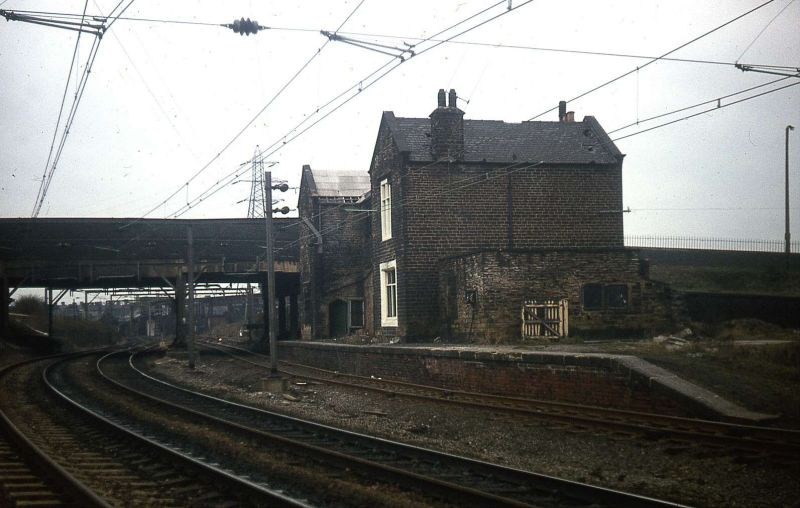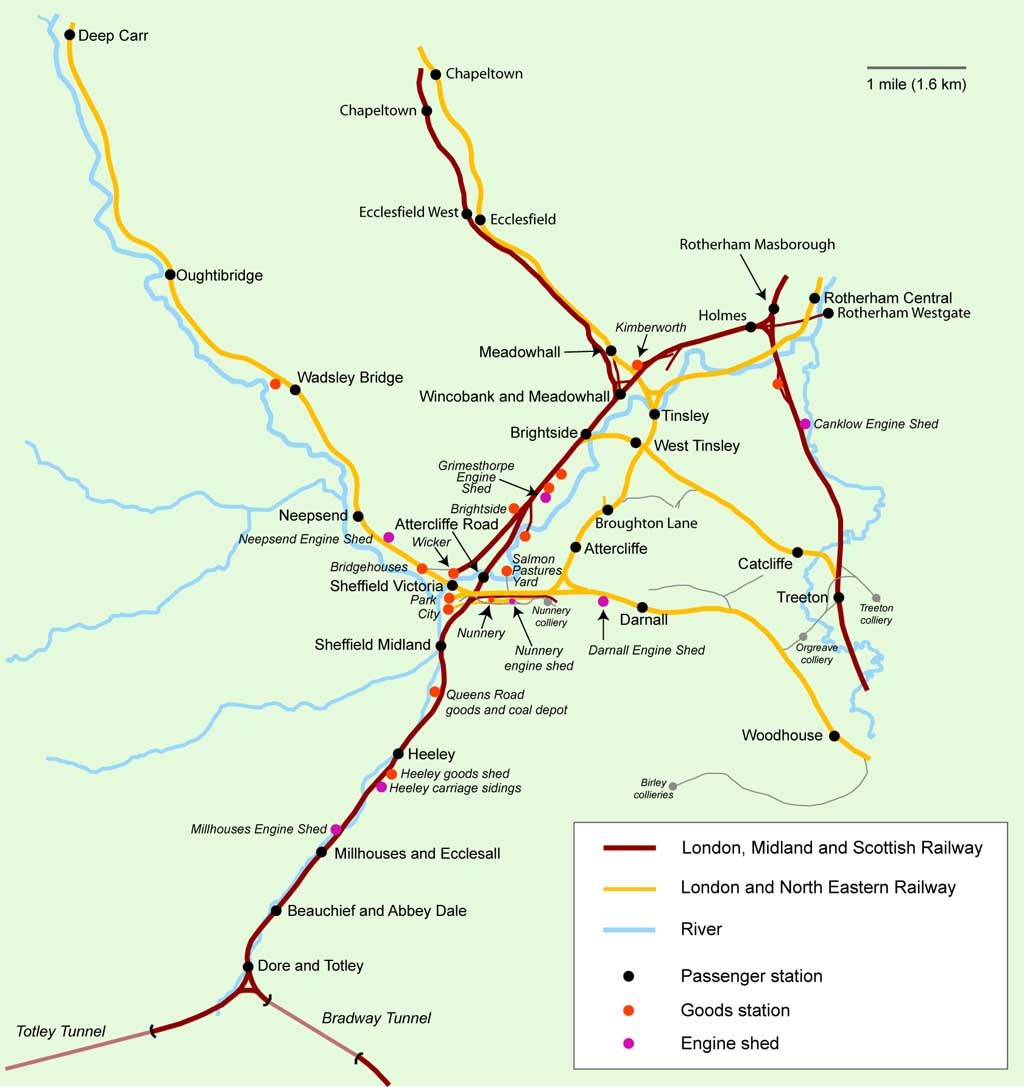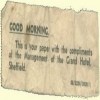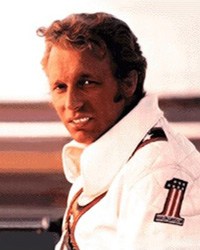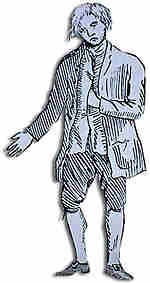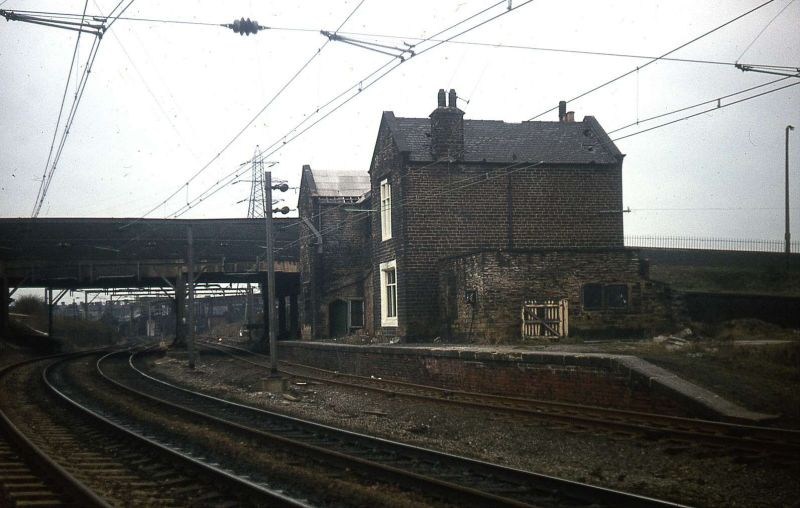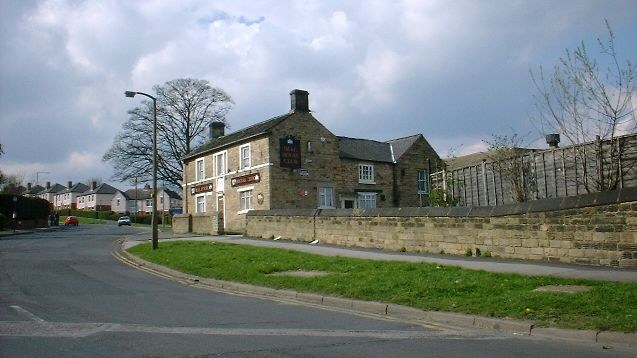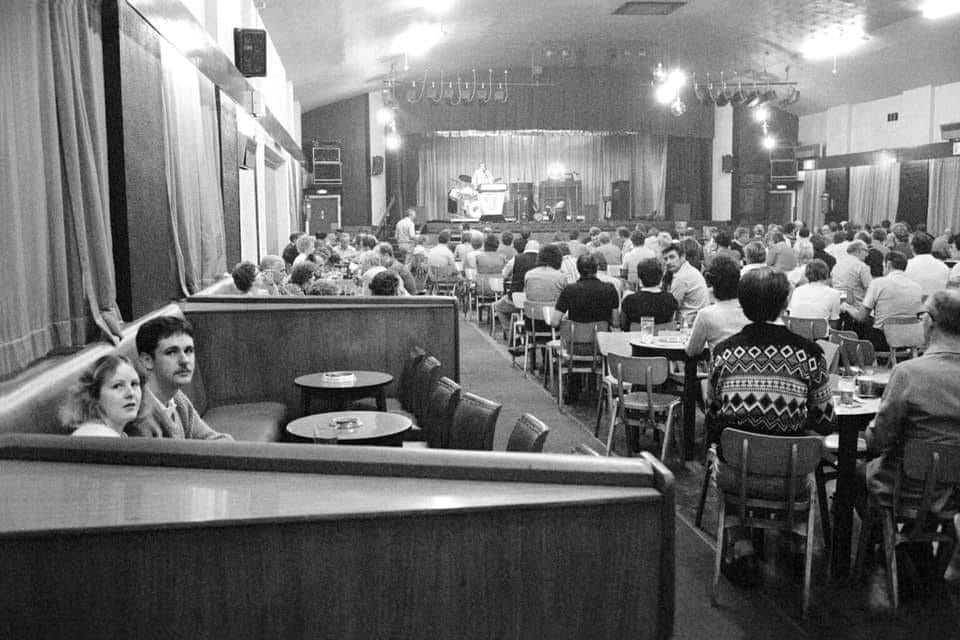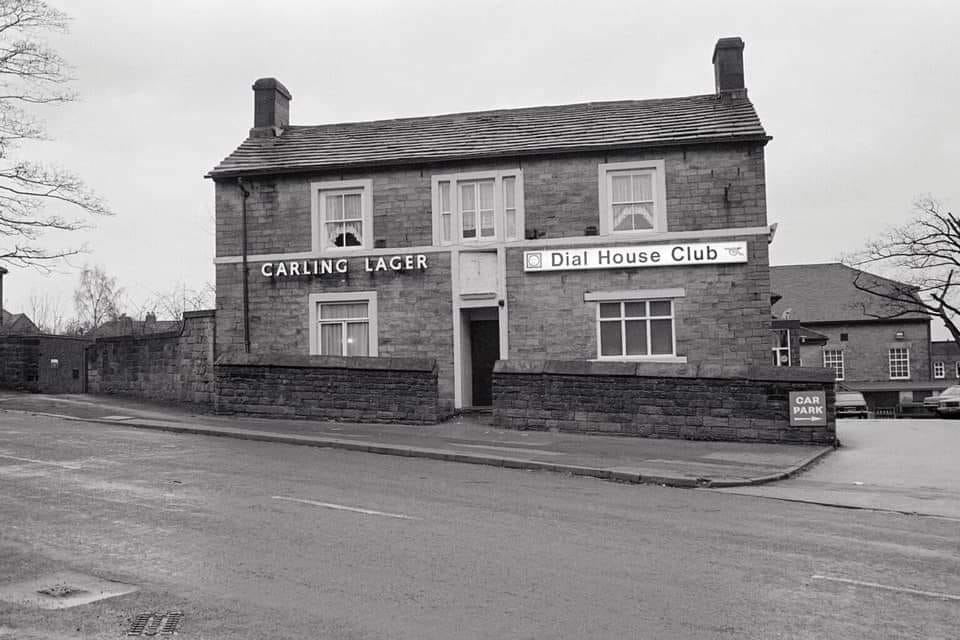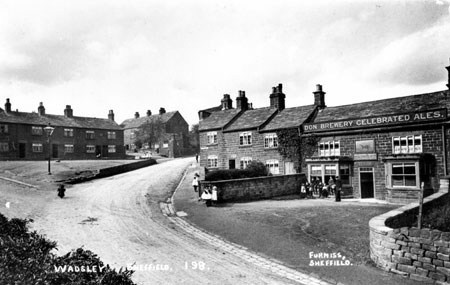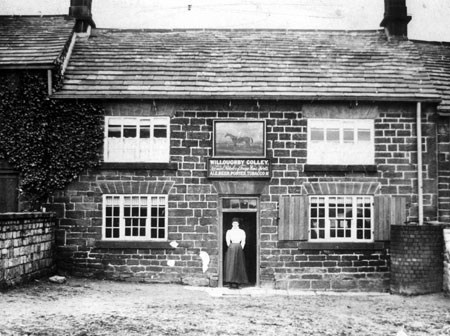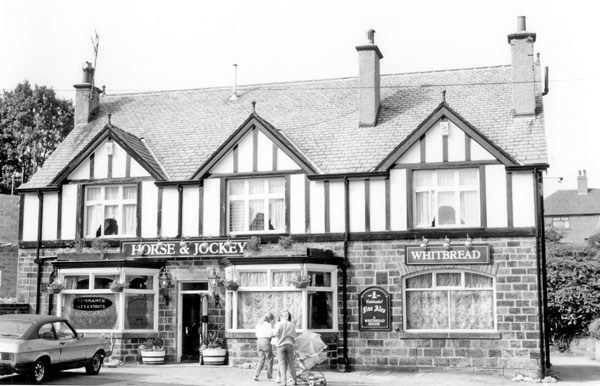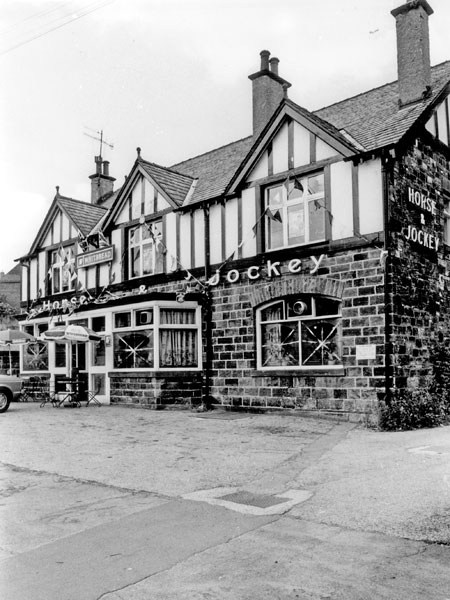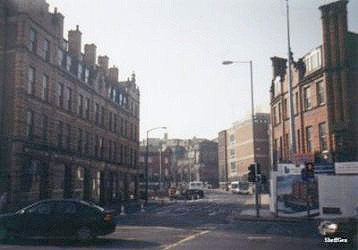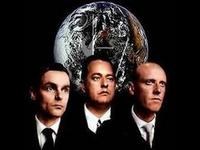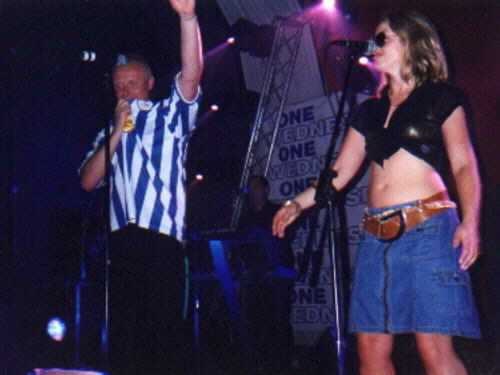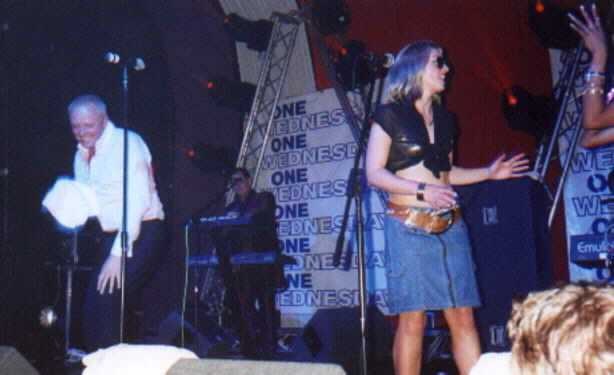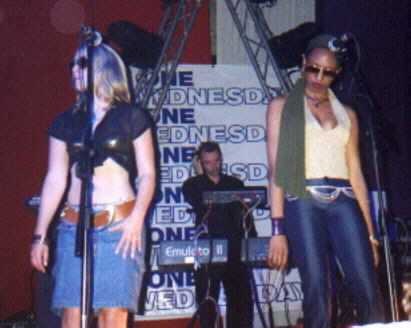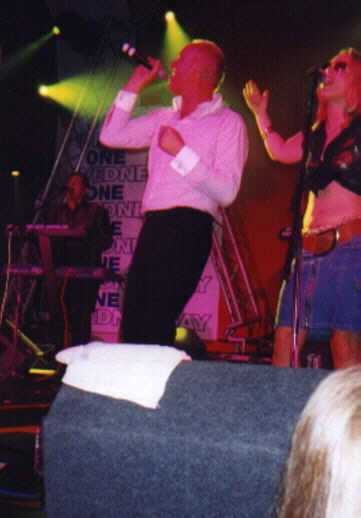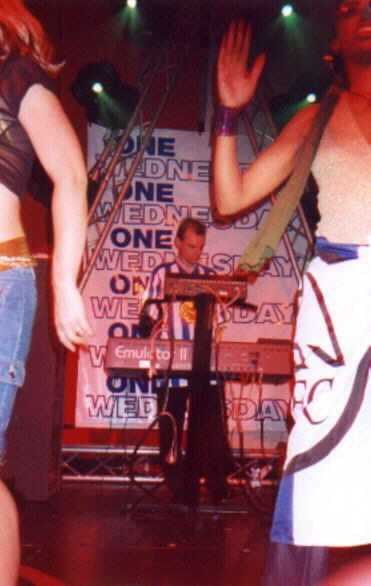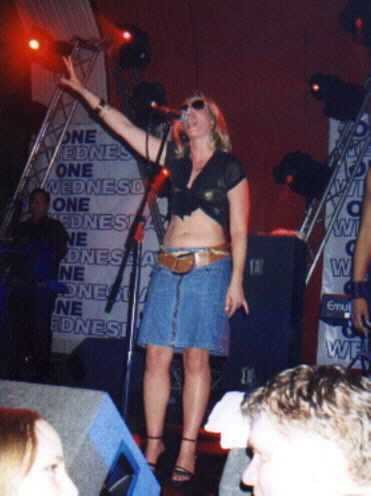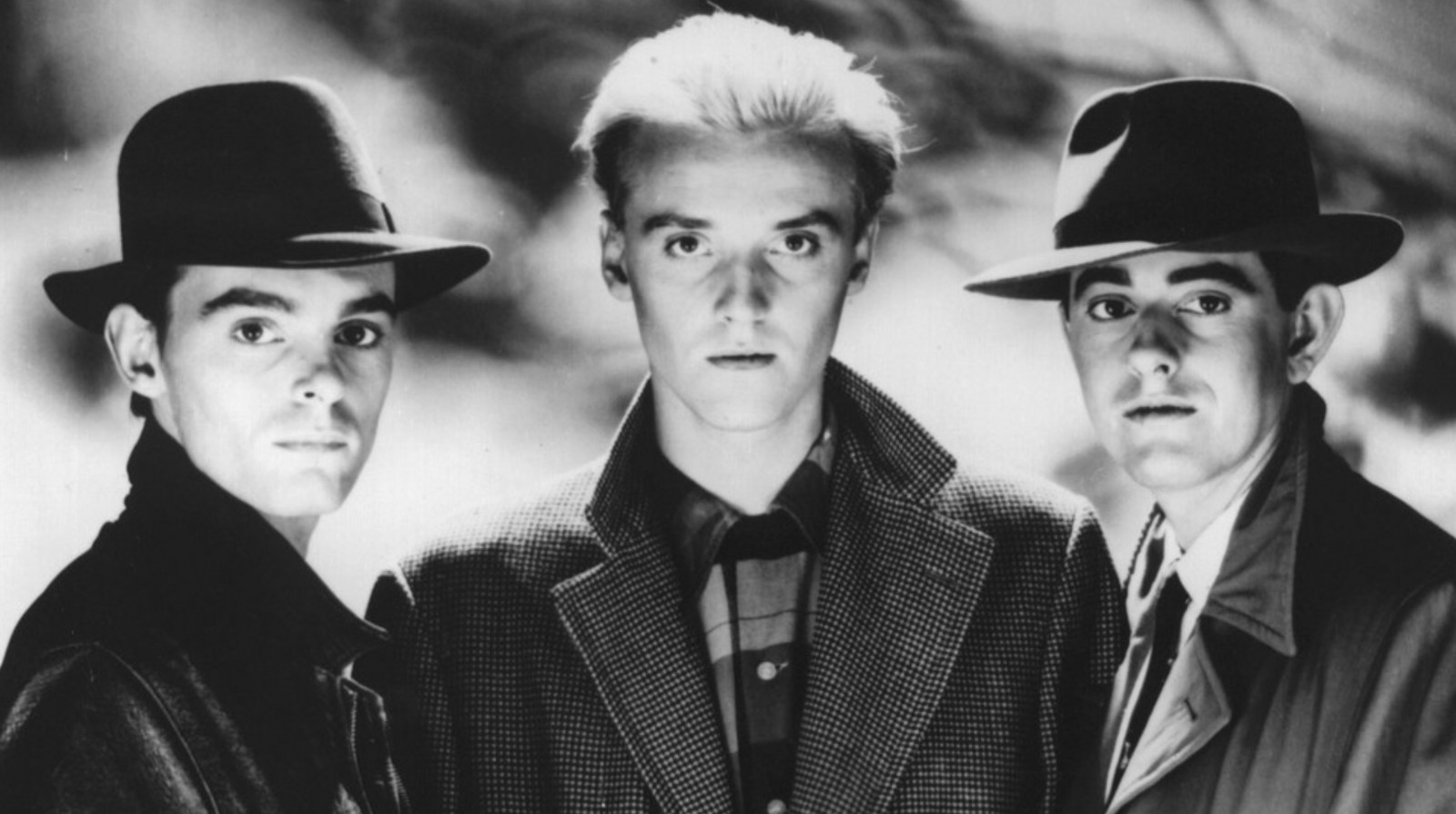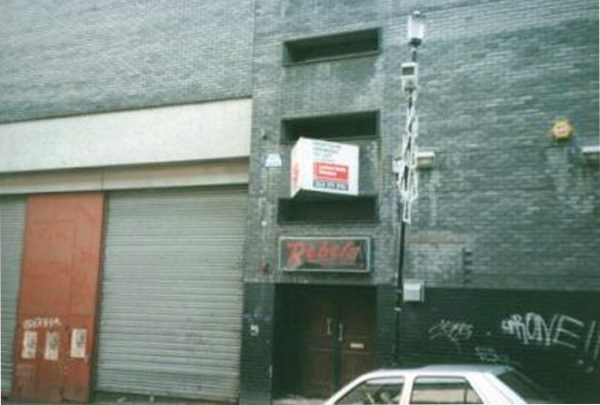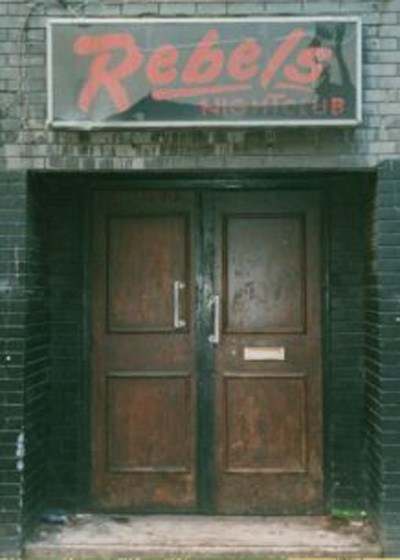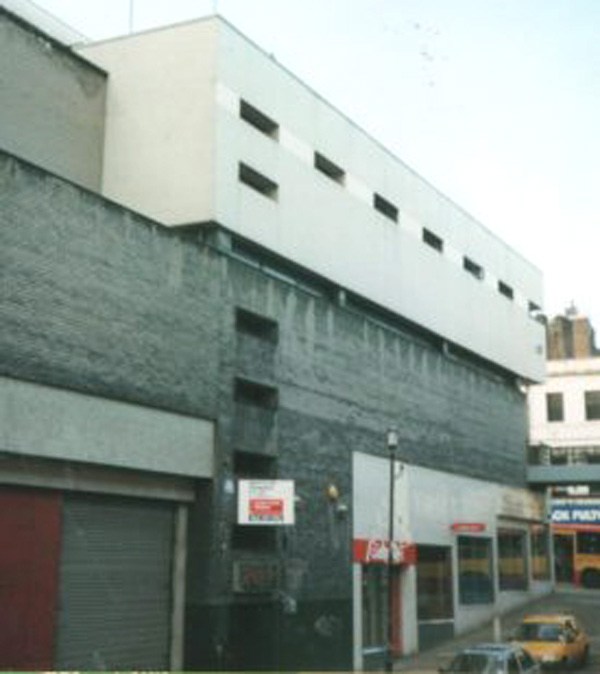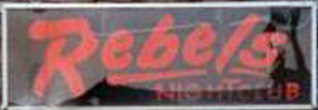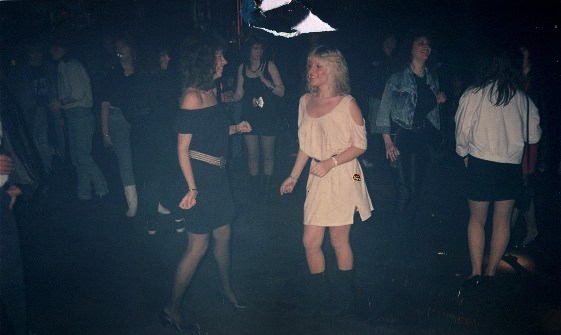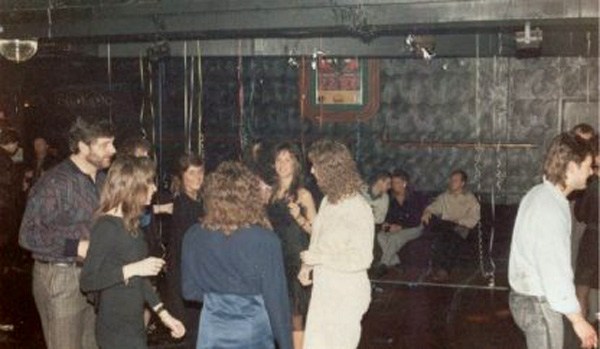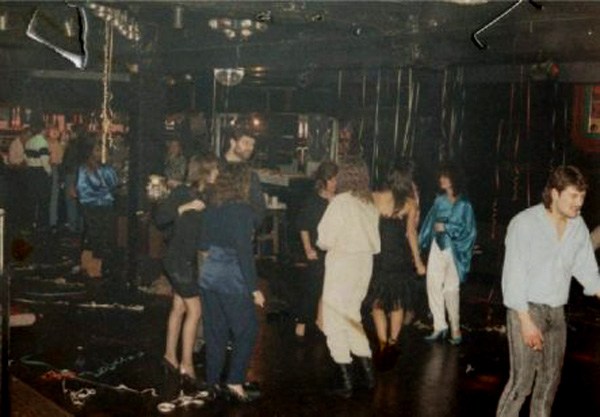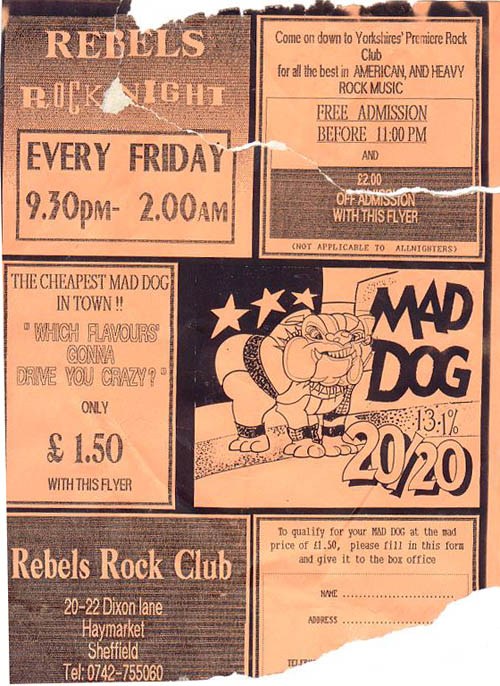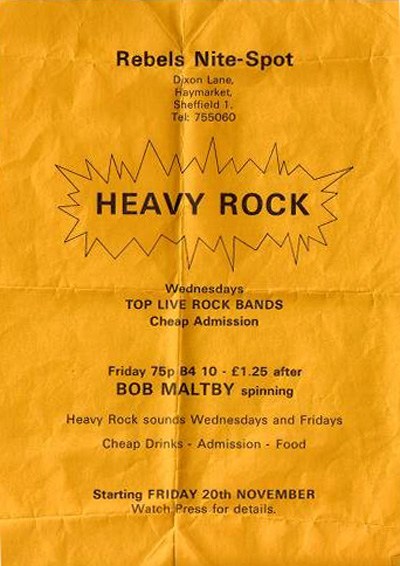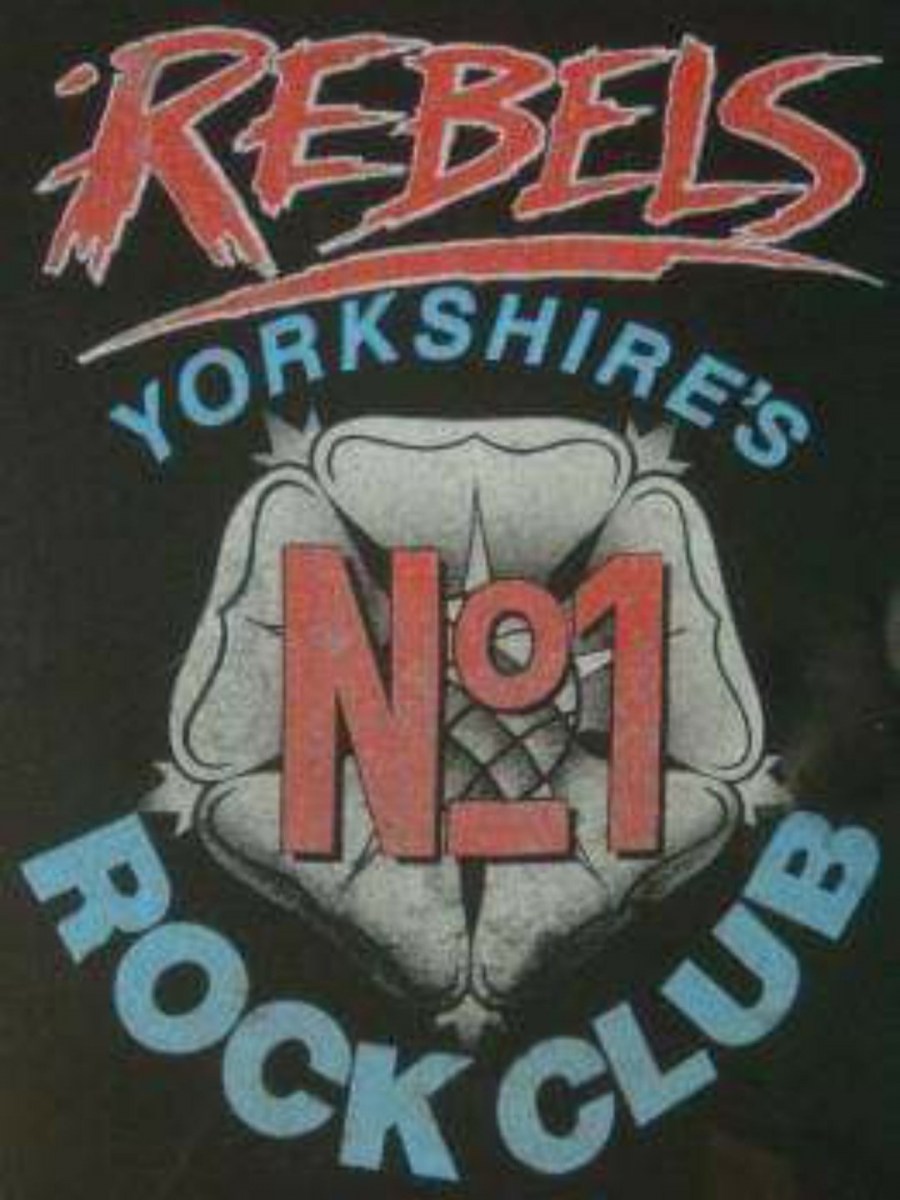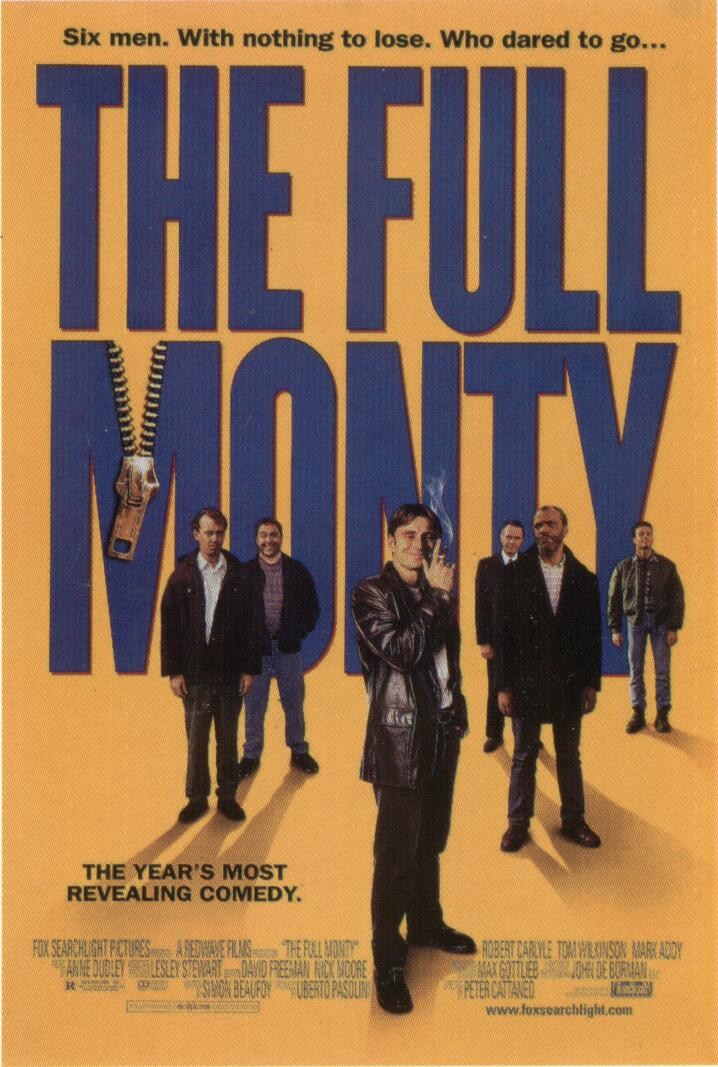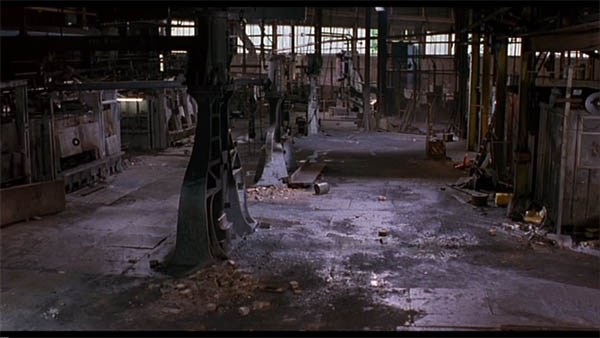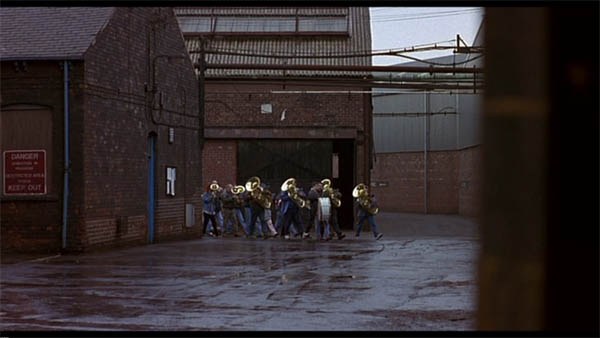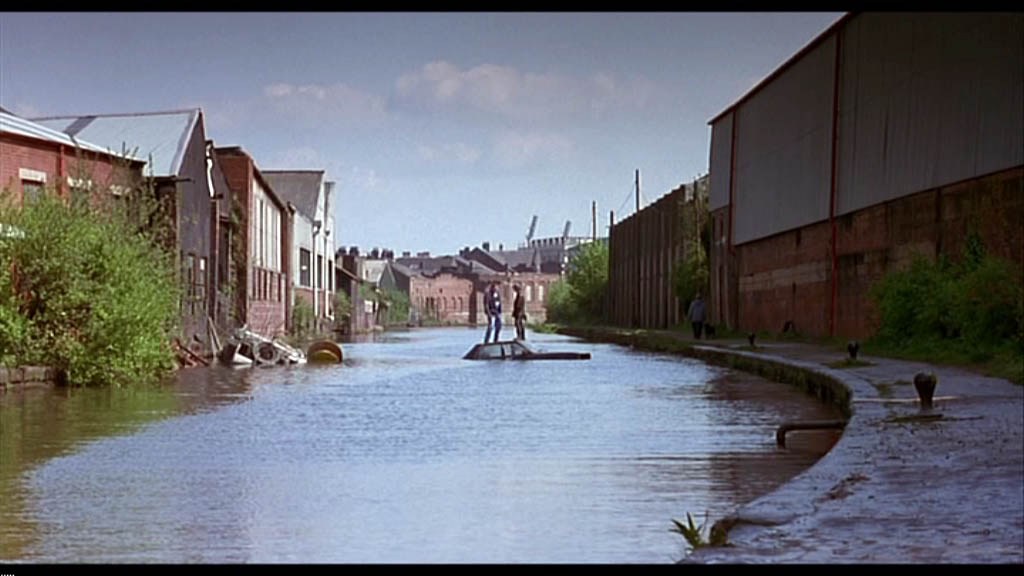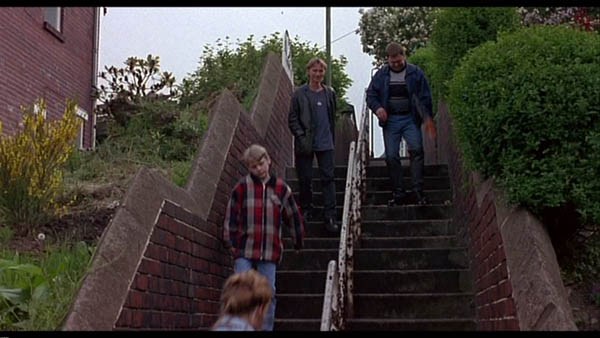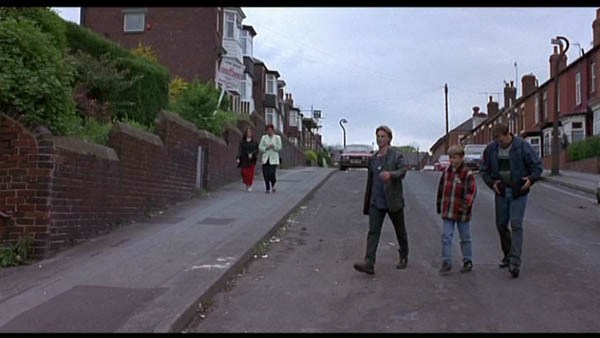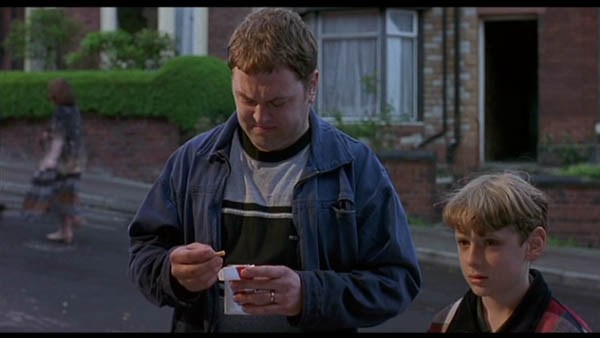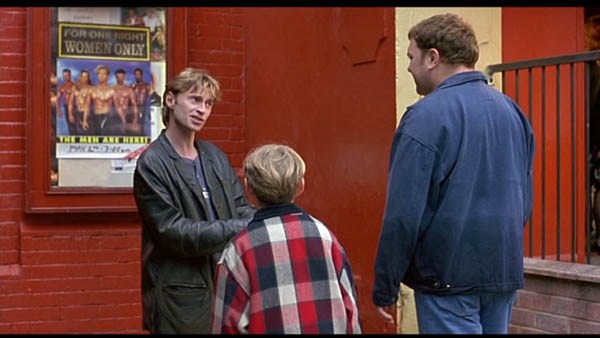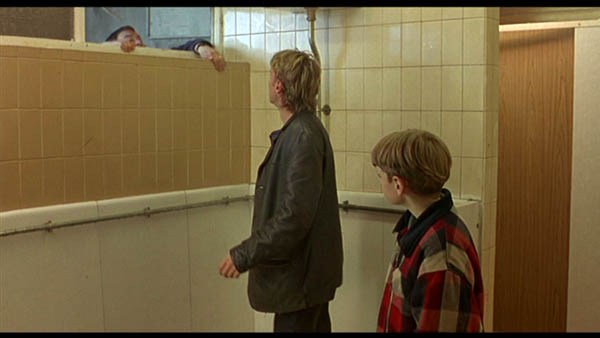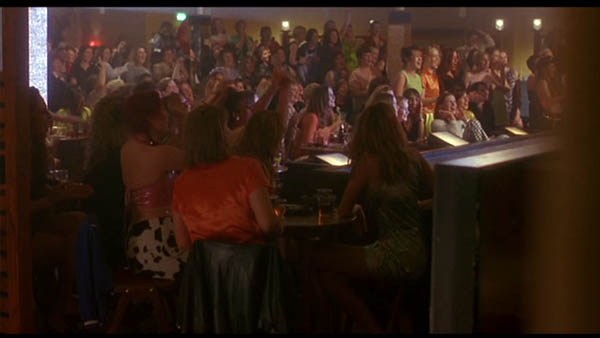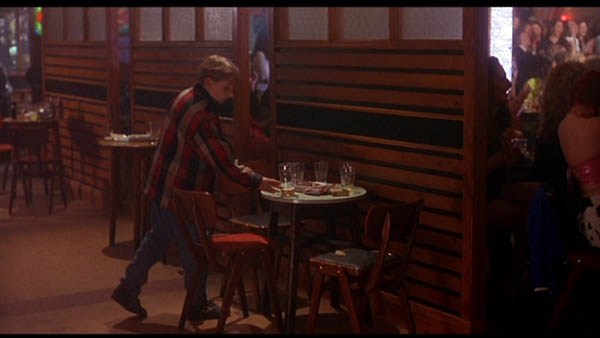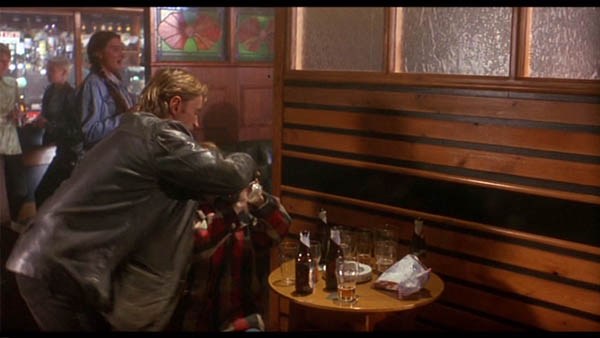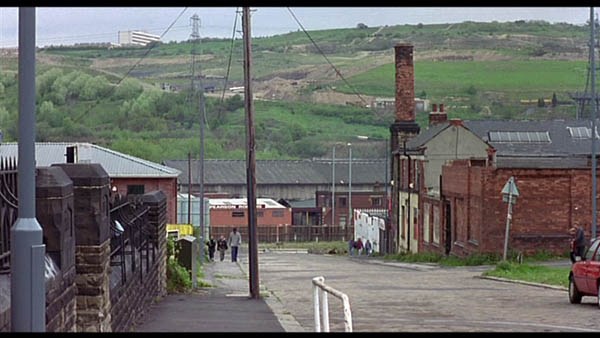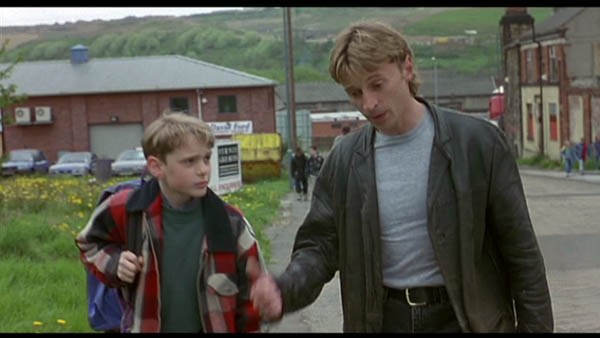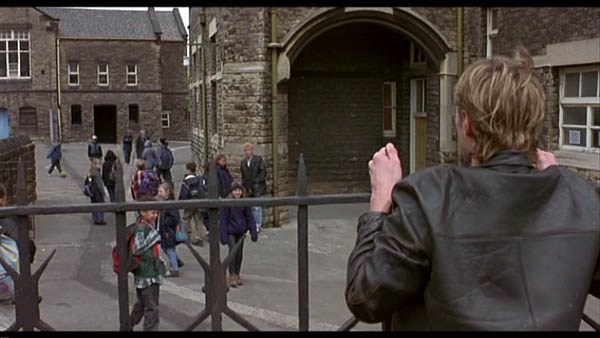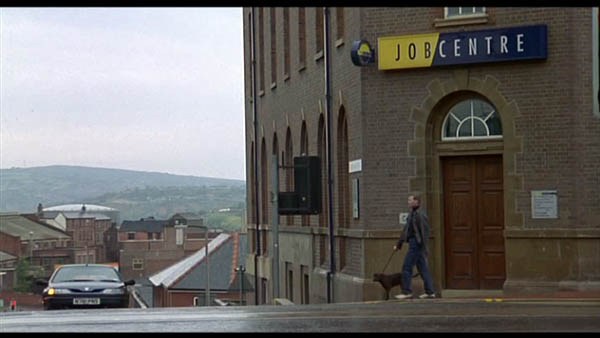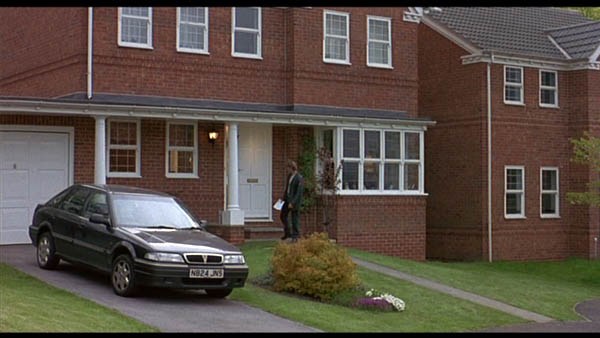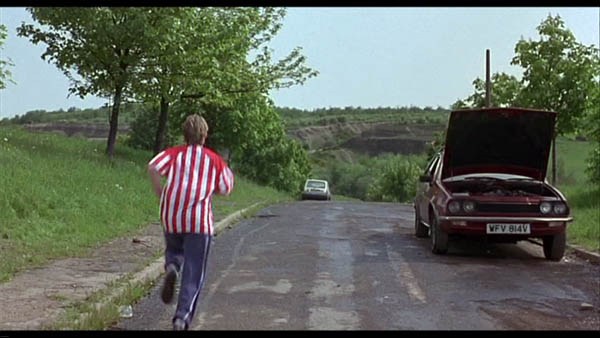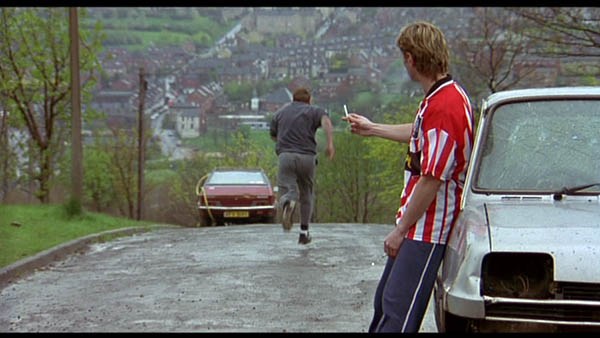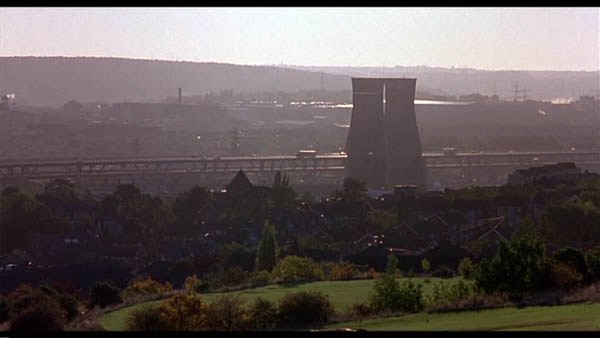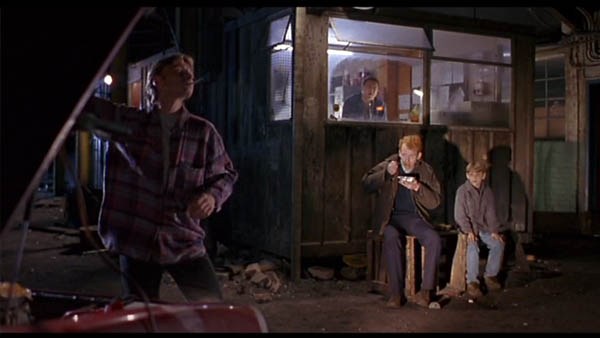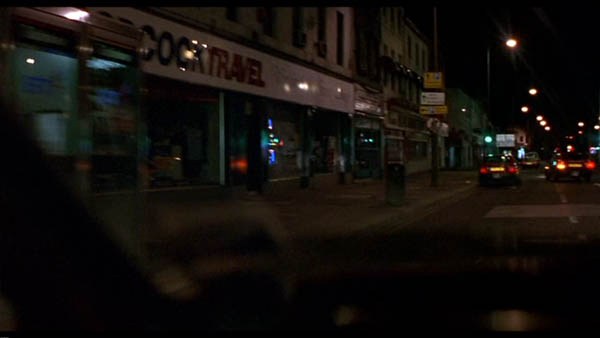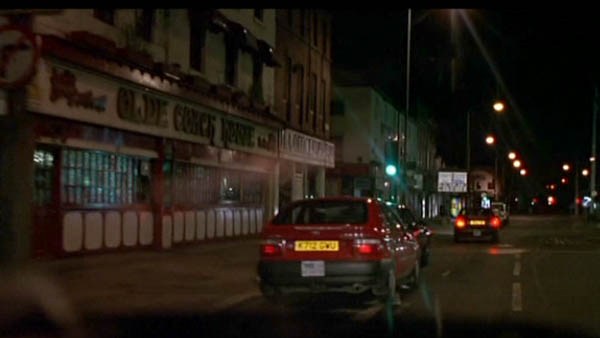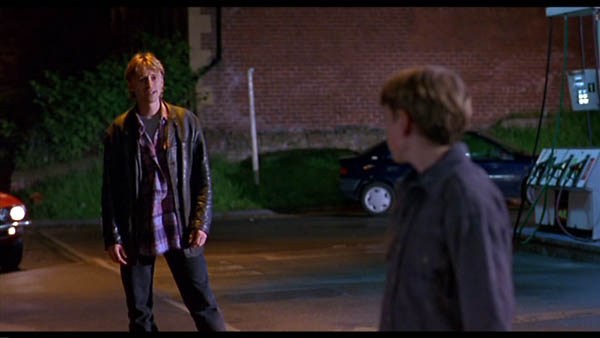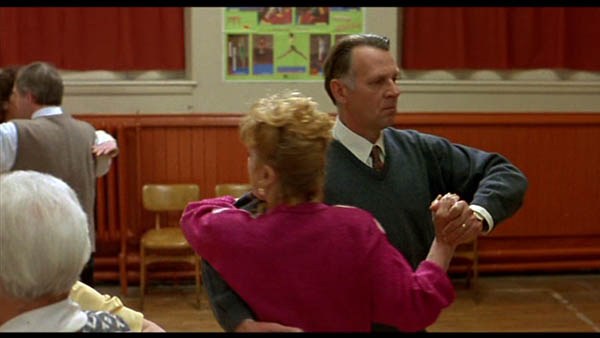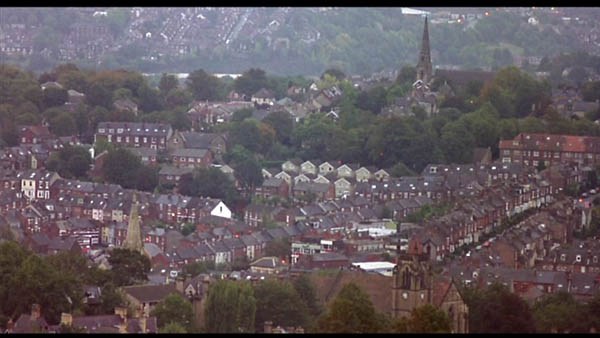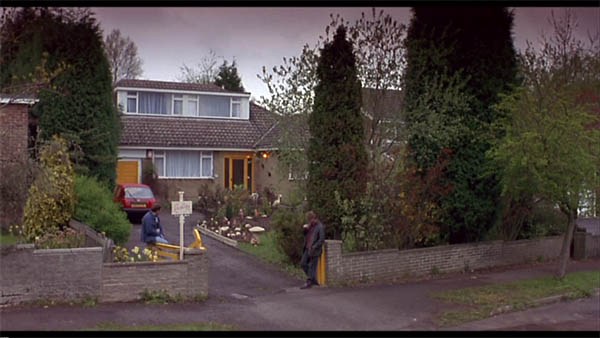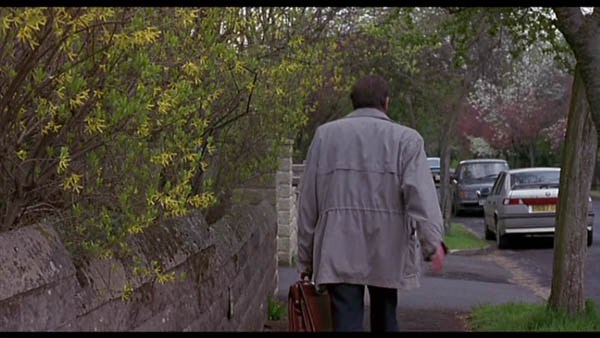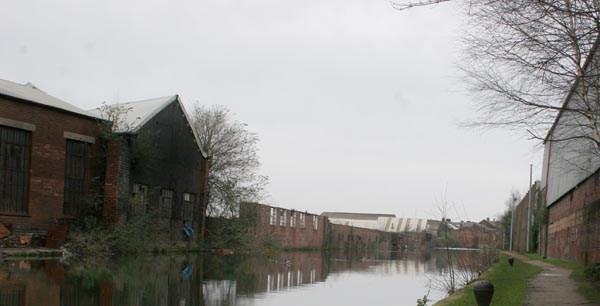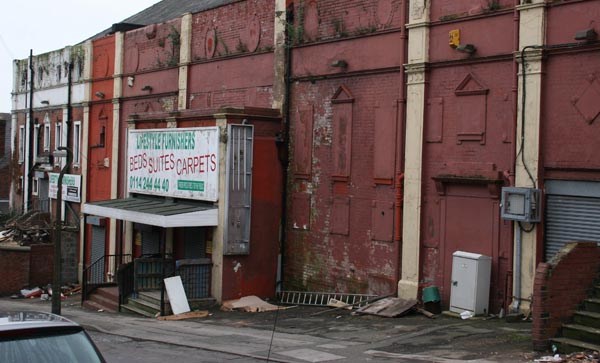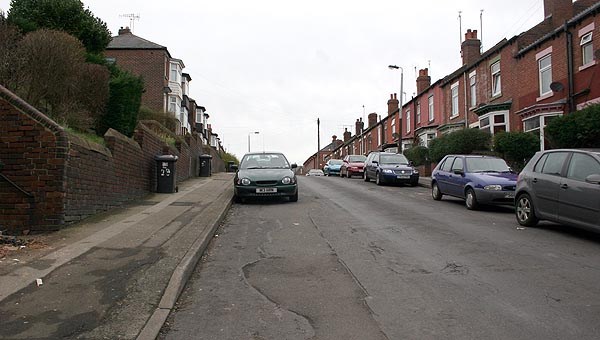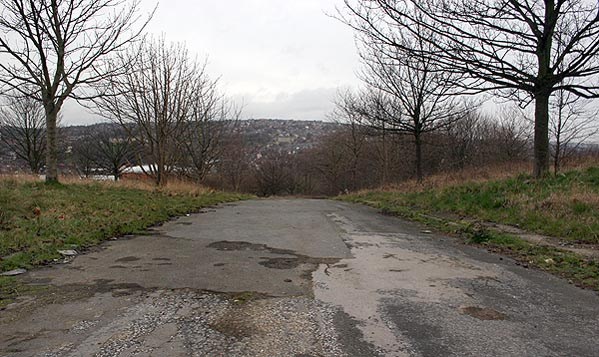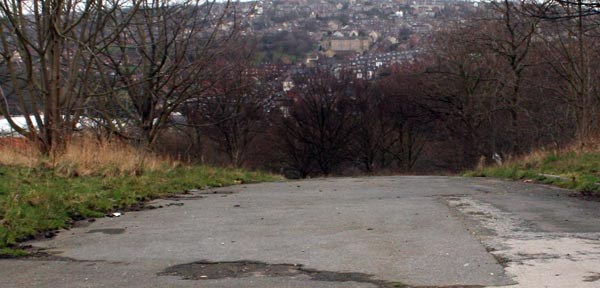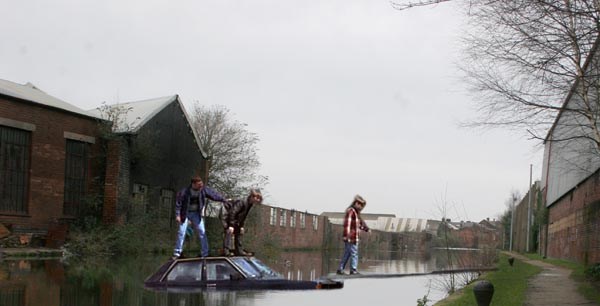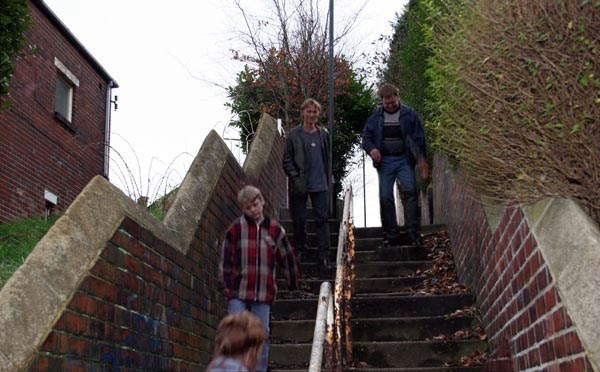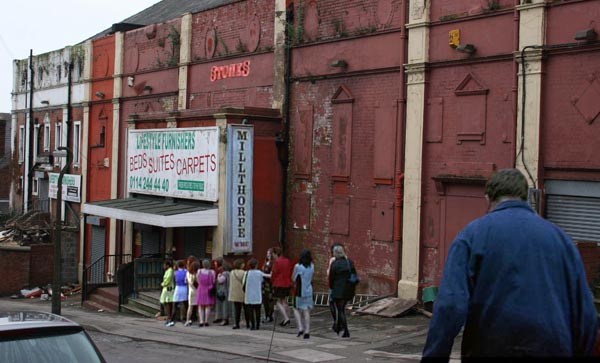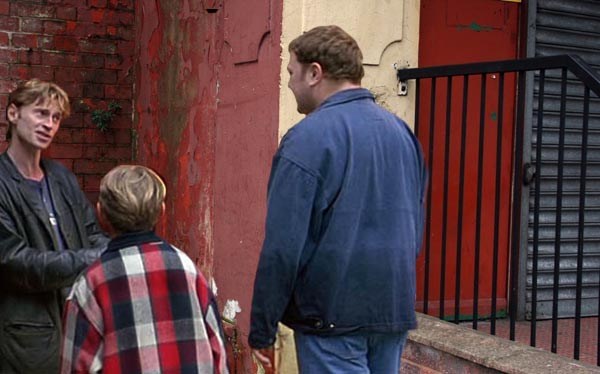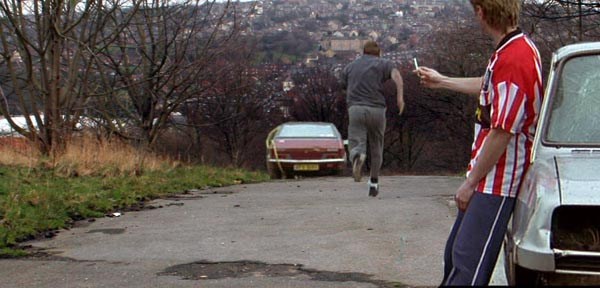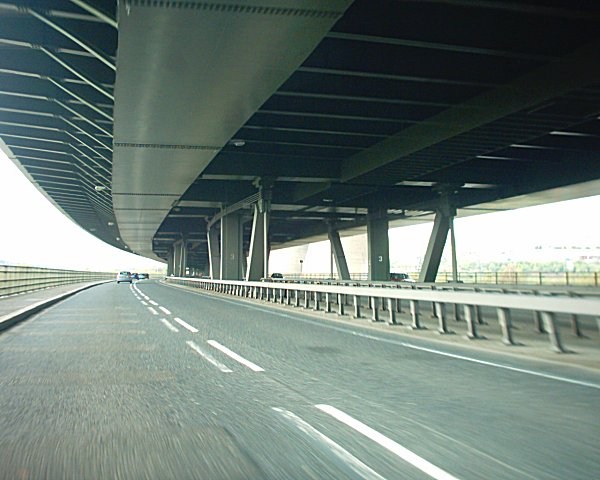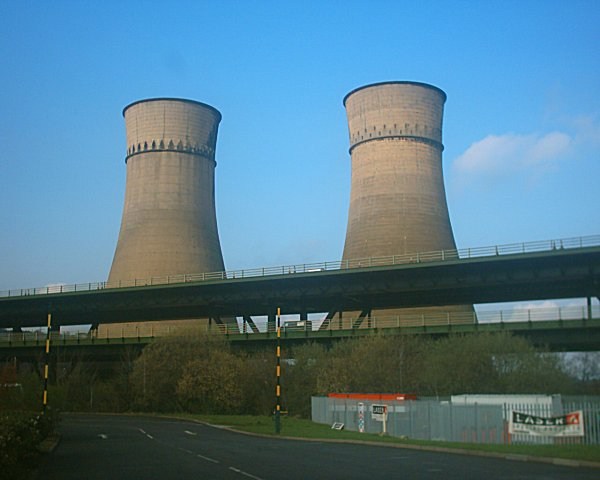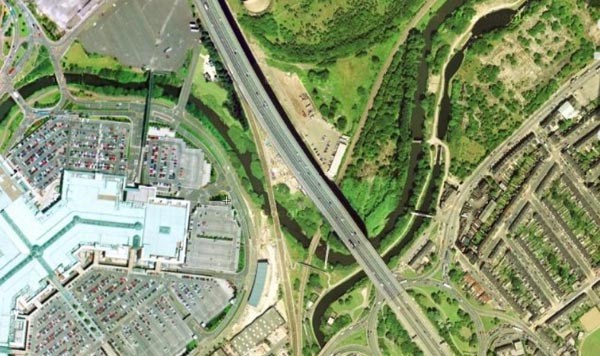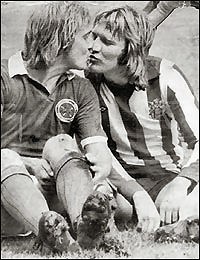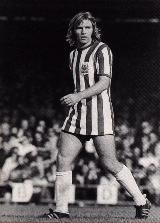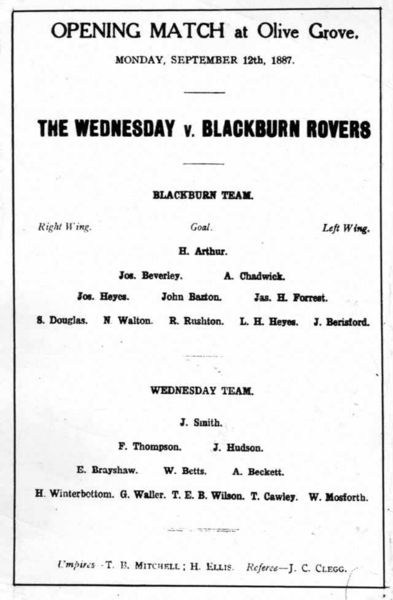Search the Community
Showing results for 'coal pit lane'.
-
SHEFFIELD TRAMS Sheffield Tramway was an extensive tramway network serving the city of Sheffield and its suburbs. The first tramway line, which was horse-drawn, started in 1873 with the opening of a line between Lady's Bridge and Attercliffe. This line was subsequently extended to Brightside and Tinsley. Routes were built to Heeley, where a tram depot was built, Nether Edge and Hillsborough. In 1899, the first electric tram ran between Nether Edge and Tinsley. By 1902 all the routes were electrified. By 1910, the Sheffield Tramway network covered 39 miles, in 1951 the network was extended to 48 miles. The last trams ran between Leopold Street and Beauchief on 8 October 1960—three Sheffield trams were subsequently preserved at the National Tramway Museum in Crich. History The horse tram era The Sheffield horse tramway was created under the Tramways Act 1870, with powers granted in July 1872. The first routes, to Attercliffe and Carbrook, Brightside, Heeley, Nether Edge and Owlerton opened between 1873 and 1877. Under the legislation at that time, local authorities were precluded from operating tramways but were empowered to construct them and lease the lines to an individual operating company. Tracks were constructed by contractors and leased to the Sheffield Tramways Company who operated the services. Prior to the inauguration of the horse trams, horse buses had provided a limited public service but road surfaces were at that time of poor quality and their carrying capacity were small. The new horse trams gave smoother rides, traveling on steel rails and were an improvement over previous alternatives. The fares were too high for the average worker so the horse trams saw little patronage, services began later than when workers began their day so were of little use to most. Running costs were high as the operator had to keep a large number of horses and could not offer low fares. It was common practice to paint tramcars in different colours according to the route operated. This allowed both illiterate and the educated, literally, to identify a tram. The electric tram era The Sheffield Corporation (Sheffield City Council) took over the tramway system in July 1896. The Corporation's goal was to expand and mechanise the system. Almost immediately a committee was formed to inspect other tramway systems to look at the improved systems of traction. Upon their return the committee recommended the adoption of electrical propulsion using the overhead current collection system. The national grid was not as developed as it is now and so the Corporation set out to provide the required current. The Corporation were to become their local domestic and industrial electricity supplier were the additional load would be sold. A power station was built for the Sheffield Corporation Tramways on Kelham Island by the river Don between Mowbray Street and Alma Street. Feeder cables stretched from there to the extremeties of the system, covering over forty miles of route. Network The Sheffield Tramway Company's original horse drawn tram network was 9½ miles long and radiated from the city centre to Tinsley, Brightside, Hillsborough, Nether Edge and Heeley. A few years after the Sheffield Corporation took over, horse tramways were gradually and completely replaced firstly by single deck electric tramcars then by double decker tramcars. It extended routes to Beauchief and Woodseats in 1927 and to Darnall and Intake in 1928. Adjacent lines were converted into circular route by sleep track connecting links. The line along Abbey Lane, linking Beauchief to Woodseats was one of them and its entirety was built on reserved track. The last extensions were opened in 1934 and extended the network to Lane Top, via Firth Park.Three small sections, Fulwood Road, Nether Edge and Petre St were closed between 1925 and 1936. In 1952, the Corporation closed 2 sections (inc. the Abbey Lane line), followed by the rest of the network between 1954 and 1960. Tram depots Over the years eight depots were built throughout the city to service a fleet of about 400 trams. Tinsley tram depot Tinsley tram depot (53°24′28″N, 1°24′45″W) was built in 1874 and was the first depot built in Sheffield for the "Sheffield Tramways Company". It was originally built for horse trams but was converted for electric trams in 1898–1899 after which it was capable of accommodating 95 tram cars. Following the abandonment of the tramway system in 1960, the Tinsley depot was sold and was subsequently used as a warehouse. Much of the original 1874 building still exists and the entire depot is listed as a historically significant building. The Sheffield Bus Museum Trust has used part of the depot as a museum since May 1987. Heeley tram depot Heeley tram depot (53°21′31.5″N, 1°28′28″W) was the depot for horse trams only, the line to it was never electrified. The depot was built by the Sheffield Tramways company in 1878. When the tram system was abandoned in 1960, the depot was sold and subsequently used as a car repair shop until 2005. The building has been sold and flats will be built incorporating the structure, as it is a listed building Nether Edge depot A small tram shed was built at the Nether Edge terminus (53°21′35″N, 1°29′18″W), which opened in 1899. The Nether Edge line as well as two other small sections was abandoned due to the narrowness of the streets the tram travelled on. This caused problems and was unsuitable for efficient service. The Sheffield Corporation concluded that trams were better for city service. Queens Road works The Queens Road works (53°22′8″N, 1°27′52″W) opened in 1905. Many of the trams used on the Sheffield tramway were built at Queens Road. The building survived for many years following abandonment, but was demolished in the 1990s. Shoreham Street depot Construction of the Shoreham Street depot (53°22′36″N, 1°27′54″W) started in about 1910 on the site of an 18th century leadmill. Following the abandonment of the tramway the depot was used as a bus garage for many years until it finally closed in the 1990s. Much of the building has since been demolished and redeveloped as student flats, although those parts that surround the entrance at the junction of Shoreham Street and Leadmill Road are still standing and in good condition. Crookes tram depot The Crookes depot, which was located on Pickmere Road (53°23′1″N, 1°30′25″W), was started in 1914, but not completed until 1919. It closed on 5 May 1957 and has since been demolished. Tenter Street depot The Tenter Street depot (53°23′2″N, 1°28′21″W) opened in 1928 and was the last tram depot to remain in operational use. As well as the tram depot there was a bus garage on the upper level that was accessed from Hawley Street. Holme Lane depot (Hillsborough) The depot at Holme Lane (53°24′7″N, 1°30′12″W) closed on 23 April 1954. The facade of the building still stands, although the rest of the building has been demolished and a medical centre built in its place. Rolling stock Unlike other tram companies, whose trams were often rebuilt and made to last thirty to forty years, Sheffield Corporation adopted a praiseworthy policy of replacement by new vehicles after a twenty-five year life. The corporation never really stopped acquiring new rolling stock and by 1940, only eleven of its 444 trams were older than twenty-six years, more than half of them were less than ten. In its history, Sheffield Corporation operated 884 tramcars. Its last livery was the blue and cream livery, which is still worn on the preserved trams at Crich and Beamish. The 'Preston' cars The United Electric Car Company of Preston built 15 double deck balcony cars for Sheffield Corporation Tramways in 1907. Initially numbered 258–272 they had wooden seats for 59 passengers, and were mounted on a 4-wheel Peckham P22 truck with two Metrovick 102DR 60 hp motors operated by BTH B510 controllers. The braking systems comprised of a handbrake acting on all wheels, an electric brake for emergency use and a hand-wheel operated track brake. Between December 1924 and July 1927 they were rebuilt with a totally-enclosed upper deck. The 'Rocker Panel' cars Following the production of a prototype at the Sheffield Corporation Tramways Queens Road works in 1917, between 1919 and 1927 Brush at Loughborough built 100 of these cars, another 50 at were built at Cravens in Darnall. The 'Standard' cars The prototype Standard Car (numbered 1) was built by Cravens at Darnall, and entered service in 1927. Subsequently about 150 more were built at the Queens Road works and 25 were built by W.E. Hill & Sons in South Shields. From 1936–1939 the Queens Road works built redesigned Standard Cars, which were known as the 'Domed-roof' Class and had improved lighting and seats The 'Roberts' cars The prototype for this series (number 501) was built at the Queens Road works in August 1946. WIth comfortable upholstered seating for 62 passengers it was the last car to be built at the works From 1950–1952 35 more of these double deck trams, numbered 502–536 were constructed by Charles Roberts & Co. of Wakefield (now Bombardier Eurorail). They were carried on a 4-wheel Maley and Taunton hornless type 588 truck with rubber and leaf spring suspension. The cars were powered by two Metrovick 101 DR3 65 hp motors. Air brakes were fitted, acting on all wheels, and electric braking was available for emergency use. Car 536, which entered service on 11 April 1952, was the last tram to be constructed for the Sheffield tramway. Representing the ultimate development of the traditional British 4-wheel tramcar, the class worked for only 10 years, as Sheffield tramway was closed in 1960. On 8 October of that year, car 513, a member of the class ran specially decorated in the final procession; so too did sister tram 510, now preserved by the National Tramway Museum at Crich. The National Tramway Museum, Crich The National Tramway Museum at Crich in Derbyshire holds eight former Sheffield trams. Sheffield Corporation Tramways car number 15 is a horse tram dating from 1874; it was the first tram to be used at the museum in 1963. Car number 74 is another Victorian Sheffield tram that was sold to the Gateshead tramway and ran until 1951. Although only its lower deck survived, in use as a garden shed, it has now been restored to original condition by the museum. The museum also has Standard car number 189, a Domed-roof car (number 264), and a Roberts car (number 510). In addition there are two works cars from the Sheffield fleet and an early single-deck Sheffield tram that is not in working condition. Remnants There are few remnants of the, once extensive, tramway. The tram sheds at Tinsley and Heeley survive, as do parts of those at Holme Lane and Shoreham Street. In many places the tram tracks were not removed, the road was resurfaced over the tracks, and the tracks still survive (albeit covered). An example of tracks covered in this way was uncovered and made a feature of The Moor pedestrian precinct. Around the City there are about ten or so of the "overhead" poles still standing(2006), such as the matching pair in Firth Park, where you can also see a small section of track in the middle of the traffic island. Poles also survive at Manor Top, Woodseats and Abbeydale Road. In places where the trams ran on a reserved track, such as on Abbeydale Road South and Abbey Lane at Beauchief, the reservation has been converted into a dual carriage-way. This article is licensed under the GNU Free Documentation License and sources material from http://en.wikipedia.org/wiki/Sheffield_Tramway LINKS Wikipedia's Excellent Article On Sheffield Tramways - http://en.wikipedia.org/wiki/Sheffield_Tramway Sheffield In The Age Of The Trams Book - Click Here To Buy The Book Sheffield Trams Link - http://www.cyberpictures.net/sheffield/s1.htm More Sheffield Trams Pictures - http://www.railfaneurope.net/pix/gb/trams/...ffield/pix.html
-
HEELEY Heeley is a former cluster of villages now a suburb in the south of the City of Sheffield, England. The village has existed at least since 1343, its name deriving from Heah Leah, High Lea then Hely, meaning a high, woodland clearing. Originally Heeley was divided into three: Upper Heeley was around the intersection of Myrtle Road and Heeley Green, Middle Heeley was on the Gleadless Road at Well Road, and Lower Heeley was on the London Road around Artisan View. History Heeley Methodist Church was built in 1826. In 1833 Heeley there were 47 householders living in Nether, Middle and Upper Heeley. Heeley Parish was formed in 1846 from part of St Mary's Parish on Bramall Lane. The first vicar was Rev. Henry Denson Jones, and the church was opened in August 1848. The clock in the tower of Heeley church was added in 1901 to commemorate the long reign of Queen Victoria. In the yard are buried more than 3000 children, most of them in unmarked graves. In 1876 the population of Heeley reached 3860 inhabitants. Many shops exist in Heeley and many remain open and are successful. Harry Ponsford and Arnold Laver were two successful merchants, the first starting a modest moving business using a handcart, the second selling timber. Ponsford is now a well established local furniture shop on London Road and Arnold Laver have several outlets in Heeley, Mosborough and Chesterfield. Transport The main road through Heeley is the A61 London Road South/Chesterfield Road, this dates from 1757 when it was built as a turnpike road from Sheffield to Chesterfield. A toll bar was built on this road at Heeley over the Meers Brook on what was at that time the boundary between Yorkshire and Derbyshire. The Midland Main Line railway line between Chesterfield and Sheffield, constructed in 1870, also passes through Heeley, a station and carriage siding were built on the former site of Heeley Mill. The station had two island platforms serving 4 tracks; two were fast, the two others slow. Heeley station was the first stop from Midland Station. The station closed in the 1960s and the line narrowed to two tracks. A siding called Heeley Sidings remain and stretches from Heeley Retail Park to Woodseats Road. Sheffield's old tramway stretched from Sheffield city centre to Woodseats and Heeley was at a time the terminus. The tramway depot still stands on Albert Road, though in recent high winds, part of the front piece of the building collapsed into Albert Road.
-
Broughton Lane Station Broughton Lane Station was a train station in Sheffield, South Yorkshire. The station served the communities of Darnall, Attercliffe and Carbrook and was situated on the Manchester, Sheffield and Lincolnshire Railway between Woodburn Junction and Tinsley Junction on the line between Sheffield Victoria and Barnsley / Rotherham. The station, with its main access by steps from Broughton Lane bridge, possessed two flanking platforms although was surrounded by sidings. In the 1960s a new line was built from near Broughton Lane into the newly opened Tinsley Marshalling Yard and shortly afterwards this was electrified. The station is now closed along with any signs of it ever existing. The site of the station is below the new Greenland Road viaduct over the line and canal near the foundations of the old bridge. Sheffield Supertram now uses the site and the nearest tram stop is near the Arena. Sheffield Train Stations 1930
-
SHEFFIELD CAFE'S OF THE PAST Here's a large and growing list of cafe's you could have found in Sheffield in the past - please add to this by posting a reply with the name of the cafe and a few memories ! The Minerva, Flat Street Joe's Cafe - next to Jessops Hospital, at the top of Regents Street (with a painting on the wall titled WHO SAID PIE) Granelli's Balcony Bar - in the Sheaf Market Kath's Cath on Infirmary Road (opposite Kelvin Flats) It was run by a fiery irishman and is now a snowboarding shop ? David Layne's New Squirrel cafe on Middlewood Road opposite the library in Hillsborough park Davy's Cafe on Fargate The Rendezvous at Sheffield Lane Top The British Cafe on Pond Street The Disc Jockey on London Road - Owned by Harry Hart at some stage. He had been [or later became ?] the landlord of the Red Lion at the back of the City Hall. He later got the Sidewalk on Chapel Walk The Rendezvous on London Road The New Orleans, practically next door to Heeley library The Pink Flamingo on Abbeydale Rd The 6 5 7 on Queens Rd The Retreat on Ecclesall Rd Thorpes cafe on Fargate The Attic At HartsHead near the Star and Telegraph (In 1969/1970 Joe Scarborough held a permanent exhibition there. Original artworks for a tenner) It was in the alley that still runs between High Street to where the Dove and Rainbow pub is now. It was on the left as you walked away from High Street and had a very narrow doorway and people from the nearby offices used to come for their sandwiches for dinner. If you were lucky enough, you could get a seat at one of the few tables in there or if you were even luckier, you could get a stool and sit at the bar along the back wall. Marsden's milk bars - one on Pinstone Street opposite the Peace Gardens and another in Change Alley The Sidewalk Cafe - Chapel Walk The Marina cafe on Meadow Street The Golden Egg at the top of Fargate (where Dixon's is now) The Mustard Seed, near the Army & Navy Stores on St.Paul's Parade The Shack next to glossop road baths Cherry Pie on Chesterfield Road, Woodseats GeeGee's at Norfolk bridge The 'Copper Kettle' on Fargate The 'Piccolo' on Cambridge Street Thorpes Cafe in Fargate (almost opposite to Coles Corner) The Jester Cafe on chesterfield road Frank Hallats "Cosy Cafe" in the Wicker alongside the Wicker Cinema (big teapot in the window) Raffertys Four Restaurants on Arundel Gate Berts cafe on Cambridge Street EL Mambo at the bottom of Cambridge Arcade virtually next to the stage door of the Empire Theatre on Union St Malinki's cafe on Bellhouse road, Firth park - run and owned by Marti caine and her husband Mitchells - at the top of Leppings Lane - previously a sweet shop run by the same family. The car wheel shop next door used to be a small coffee bar with the latest juke box (around 1958) Pauls Pantry on a road off Holme Lane near the Middlewood Rd traffic lights. The road that goes up to Walkley. Near a bridge over the river (1961) The South Snack Cafe Crookesmoor Road run by a beirut man called Salah The Wimpey at the top of the moor Woolworths in Haymarket had a cafe/restaurant where you had to walk all around the cafe area with a tray on a rail The Tangerine cafe at Catchbar Lane, circa mid 1970's Joe's Cafe and Chippy on Northfield Road Crookes (Joe cocker used to go in at nights, also his band the avengers ? Tony Christie used to pop in regulaly for fish and chips.) - Now an indian Tony's cafe on Firvale The Rickshaw cafe just off West Street Pudding Parlour on Cambridge Street (late 70's) - Its now Pepe's Davies Cafe on Waingate in the 1960's The Gambit restaurant that was near the top of Commercial St, almost opposite the Kings Head pub (It was downstairs to the entrance) The Peacock in the Wicker The British Restaurant in Pond Street The transport cafe on Middlewood road opposite S.W.F.C training ground and Gilders (formerly Waldod motors) The Centre Spot - on Snig Hill Coffee 'n' Cream, Hillsborough Corner
-
Summer 1957 at The Grand Old favourites Albert & Les Ward are at the Empire, went to see them, but sadly, now find their act very dated. Near the Empire, there's a coffee bar called the El Mambo, we love going in there, drinking Espresso coffee and watching to see who is going to come in, it's a great meeting place for young people, and there's a small juke box which is kept very busy playing the hits of the day. 'When' by the Kalin Twins is my favourite, and I show off that I know all the words!! Frankie Lane is here, he's not at all 'starry', he's really friendly, he gave me his autograph and said to me "You're awfully pretty, you know" - what - me???? Crikey! Mr Asua, who has been staying here all week, is leaving today. He came in the lift and gave me a box of chocolates and 2/6 (12½p) tip saying in his lovely foreign accent - "Forr you, Frridda". Sometimes, I get as much as 10/- (50p) a week in tips, which helps to boost my pathetic little wage. Went to see The Dallas Boys and Les Hobeaux, at the Empire - great show, The Dallas boys are terrific! Went round to the stage door to get their autographs, they were good fun and very friendly. Max Wall here next week, we are booking a box, as we all think he is so funny. Freddie and the Bellboys are staying at the Grand, going round the corner too fast and ran right into the arms of one of them. Grrrr - wouldn't mind doing that again! I am off on Friday so went in the hotel to collect my wages. The timekeeper wasn't going to let me in as it was my day off, he said I had no right to come in the hotel unless I was working, Mac was passing by, worse luck, and joined in. I feel my anger boiling up, as I thought I wasn't going to be able to get my wages. Somehow, I manage to hold on to my tongue, I know if I stand up for myself, Mac will report me and I shall get the sack. Luckily, Dennis is passing by and seeing how upset I am, asks what's wrong, when I tell him, he takes me to the wages room himself, telling my adversaries that I am allowed in the hotel to pick up my wages. I find wages day so humiliating somehow. We have to wait outside in the corridor, and not go in until our names are called. The assistant manager, who I dislike almost as much as Mr Rendall, sits at a trestle table which has separate piles of money on it, the secretary calls out my name and how much I'm to be paid, the assistant manager barely manages to spare a me a look, he counts out the money. If I am lucky, he may give me 2 pound notes, three shillings and seven coppers, or perhaps 4 ten shilling notes, which makes my wages look much better! If I'm not, I will get a handful of various coins - half crowns, two shilling pieces and a lot of pennies, which, hopefully, will add up to the right amount, if it doesn't - tough! (Wage packets are apparently, unheard of at the Grand - at least for the likes of me, and my wage slip is just a tiny scrap of paper with faint, unidentifiable hieroglyphics on it). I give all my wages to Mum, who gives me back a £1 for spending money and 7/6 (42½p) for my bus fare - which doesn't leave much of a contribution towards my keep. Mum encourages me to save, and I save a ¼ of my £1, putting the 5/- in a Post Office savings account. Babs earns about £3.5s.0d, she gives Mum 25/- a week for her board. Mum would like to be in charge of Barbara's wages too, but Barbara wants to be in control of her own money. Quite right, too. I walk down town afterwards, looking at things I know I cannot afford to buy, but I treat myself to my regular 'read', Picturegoer and Weekend. I love reading about filmstars and their lives. For Christmas, I always get a Film Star Annual, and I will read it over and over again. (And I still read these very same annuals, over and over again...) Trench coats are all the fashion. Lorna and me are saving up like mad, to buy one, they are 5 guineas, but we cannot decide which colour to get - Royal Blue, Red or Beige, but we agree that we are both going to buy shiny, black patent shoes with high heels, well, high-ish, anyway, which will cost 34/11. It will take a lot of saving out of our poor little wages. In the meantime, our noses will be pushed up against the window, trying to decide on the colour we are eventually going to get -hopefully before they have gone out of fashion...I went to sleep that night, my mind full of my imminent purchase and dreamt I was on stage dancing in my high heels and trench coat, which I finally fling off to reveal a sexy, figure hugging outfit complete with black fishnet stockings! (tights haven't yet been invented!) In the event, and unknown to one another, we both decided on the royal blue, and rather enjoyed going out together - looking like twins -in our new outfits! 1957I often lament the fact that I am only sixteen, gauche and nothing special to look at, especially in this ghastly uniform, as so many nice young men come in the hotel, either to stay or just to have a drink in the bar. There are three nice young men staying in the hotel at the moment, they are here on a three day training scheme. They are very friendly; I like Les in particular, so I'm, surprised, but delighted when he suggests that we should go out on a date, and to bring two friends for his two friends. But he is 22 years old; I ask Mum if I can go, but she says no, he is too old for me. Never mind, there is someone else in the hotel who is taking my attention. He is absolutely gorgeous. He has lovely black hair and dresses very smartly. He's staying in a room on the first floor, so he doesn't use the lift, unfortunately. I watch him constantly, as he moves around the hotel, Barbara, the head telephonist, came round the corner and bumped right into him, lucky thing! Sadly he is leaving, the porters bring his luggage down in the lift and I note the name on the luggage label as being T. B.Cullinan. Two days later he is back and the porter informs me that he is a Lord! Things are beginning to click into place, the address on the luggage label was Transvaal, South Africa - and I remember learning about the Cullinan diamond at school. He seems to have everything - good looks, a title and riches beyond belief, I mentally shrink into my dull brown uniform - the gulf between the have and have-nots just got bigger... Much as I like looking at him, I try to merge into my surrounding whenever he's around, I cannot bear him to look at me in my shabby uniform. I like to keep this small corner of my world looking **** and span, and love polishing the brass parts of the lift. A brass rail runs along three sides of the lift, about hip level, which is either to lean against - or hold on to! There's a brass frame on one wall, which holds the poster showing who is appearing at the Empire that week. (why oh why didn't I think to save them???) Beside the lift, a glass mosaic wall curves round into the ballroom. I breathe on the glass and give it a good polish, my intention is to work my way round to the ballroom, if I look industrious enough, I might be able to move round far enough to sneak a look in. I am aware of someone behind me, I turn to see Lord Cullinan smiling at me, one brow raised in amusement. I feel my cheeks blushing scarlet; did he think I was looking at myself?? His eyes wander over me, slowly and very purposefully he looks me up and down but doesn't say a word; he then turns and walks towards the bar, but turns to look at me again, before disappearing inside. I want to curl up and die. Has he been aware of my eyes following him around all the time, and came to give me a taste of my own medicine? I flee into the safety of my lift, feeling miserable and inadequate, hating being no more than a little lift girl in a shabby brown uniform. The lowliness of my position here, at odds with my own sense of value. Later, I have to go on the switchboard for a while, Lord Cullinan rings down from room 103, we have to make all the phone calls for the guests, (no direct dialling for some years yet) I get him a number in Fulham, London, I would love him to know that it's me he's talking to, to let him know that I am capable of more than just operating a lift, but of course I cannot say anything. Mr Spitzer gave me tickets to see Ronnie Hilton at the Empire, but didn't go, he was very cross with me, but there is a fair in the village, and I wanted to go with my friends, everyone goes. It is the place to meet, and hope someone will invite you to go on the walzer with them. We have got to know three boys who are cousins, they are all quite handsome, but we will only ever be just friends, none of them see me any other way. (Which can be quite a blow to ones esteem at that age). June 1957 was very hot and dry. July starts with thunder and lightening - which both fascinate and terrify me! I stand at my bedroom window, watching bright flashes of lightening zig-zagging across a navy blue sky, heralding the terrifying crashes of thunder, finally, the heavens open and the rain comes bucketing down - rain that we badly need. Phew - now it's cool enough to sleep! 'Disc Doubles' was on at the Empire last week, people who look like pop stars mime to records - almost as good as the real thing! This week Ray Ellington (actor, singer, comedian, musician - a very talented fellow, who was also known as 'the fifth Goon') is here and he is lovely - so full of fun. His very presence livens up the whole of the hotel. He clasps me to his broad chest every time he comes in the lift! He's an outrageous tease, but makes me feel very happy. Before he leaves he gives me two addresses in London, where I can write to him, if I want to. (I remember those hugs very clearly, great big bear hugs - great stuff!) I note in my diary that he drives a black & white zephyr Reg. ELL 777). July 22nd 1957 - I would have thought that Ray Ellington would have been a hard act to follow, but a visit by The Harlem Globe Trotters and The American Allstars is something I will never forget! They were appearing at the Sheffield Wednesday football ground for one night only. They all came in, in a great big rush of American gianthood, piling into the lift, which was only supposed to take a maximum of 9 ordinary sized people, half a dozen giants was just too much for my poor little lift, it did not get off the ground, in fact it immediately sank. There's about 3 spare feet in the lift shaft below floor level, and we took up all of it! There was no way the lift gates could be opened, the lift engineer had to be sent for, in the meantime it was the most hilarious 15 or 20 minutes I've ever spent. What with the other players pulling faces at us through the gates and telling the trapped players that their time was up and they should now swap places! They needn't have worried; it was to happen several times again, before they finally left the next day. I was invited several times over, to watch the game that night, in the end, I decided to be tactful and accept the invitation of the Manager, Gene Moyers. I took my friend Barbara, and we had a fantastic time. During the interval, the entertainment was just amazing - the trampolinists, the jugglers, the cheerleaders. Benny Shirtzinger, twirling his batons, was a real showstopper. I had promised to go round to their dressing rooms afterwards, but it seemed an impossible task - the entrance blocked by hundreds of fans. The boys came out to sign autographs, by this time we were being well and truly crushed by the surging crowd. I saw Ronnie Kim and yelled his name, my small arm flailing about in an attempt to get his attention, catching a glimpse of our frightened faces in the teeming crowd, the boys pushed their way through, lifting us effortlessly over the heads of the crowd and depositing us in the entrance to the dressing rooms, where we stayed until the crowd had dispersed. They wanted us to go back to the hotel with them in their coach, but whilst Barbara could have gone, not only was I not allowed in the hotel when not on duty, but even being seen socially with a guest was a sackable offence. Instead, we hitched a ride in the team's coach and were delivered safe and sound onto our own doorsteps. I would see them again tomorrow when sadly, we would have to say goodbye. I had taken quite a shine to Benny, the baton twirler. He was a very good-looking young man of 27, and he was happy to have my fan worship, he invited me to his room to collect an autographed photograph. When I went, he only had a pair of shorts on, perhaps I backed out of his bedroom a little too hastily, I apologized and said I'd come back later. The next time he came in the lift, he had the signed photograph for me, and signalled for me to put a chaste kiss on his cheek. He looked at me in a way that gave me the uncomfortable feeling that he found me curiously naive. Their departure was as crazy as their arrival - the front hall just a mass of luggage and belongings. And all these incredibly big guys coming and going, calling to each other good naturedly - such noisy informality would have given Mr Rendell apoplexy! With their departure, it suddenly went very quiet - The sedateness of the Grand Hotel had been restored.
-
SHEFFIELD GIRL After I started work at The Grand Hotel in the centre of Sheffield, I began to write in my tiny, handbag size, 'Film Star' diary, all the daily happenings. I was meeting 'Stars' almost every day, and I felt it all had to be carefully documented. I also kept my autograph book close to hand! I was able to meet many stars on a one to one basis, thanks to the manager of the Sheffield Empire, Johnny Spitzer, who lived at 'The Grand'. He was very kind to me, not only giving me two free tickets, in the best seats, almost every week, but also making sure that I met the performers that I really liked. Whilst my old school friends were now forming steady relationships and looking in jeweller's windows in anticipation, for me, marriage was always in the distant future. Despite having strong feelings, from time to time, for certain boyfriends, it was never with the intention of 'settling down'. For me, I felt there was so much more to life than getting married, so many people to meet and places to discover - and I managed to hold on to my single status until I was 27! Despite the rather hectic and most enjoyable social life I had in Sheffield, I longed for something more. Jenny, my pen friend in London, encouraged me to spread my wings, and when I eventually left Sheffield behind, I was full of excited trepidation for the wonders that I truly believed existed in London. And it was exciting. (Quite terrifyingly so, on occasion). I was there when the 'Profumo Scandal' made all the front pages; in fact it was happening so closely around me that I was even mistaken for Mandy Rice-Davies! Meeting well known people from stage screen and television was a daily happening, and I was thrilled to become friends with my favourite pop star - Gene Pitney! I remember clearly the deaths of Marilyn Monroe and Jack Kennedy; coming face to face with two of the Beatles on Oxford Street; appearances on TV and having a very famous neighbour! I was almost 20 years old, it was the birth of 'The Swinging Sixties' and London was most certainly the best place to be - I became a teenager all over again! I really loved living in London, even imagining, eventually, that I was a London Girl; after living there for eight years I thought I'd shaken off my Yorkshire roots - I'd certainly had some rough corners knocked off me! But of course, you never, ever, completely lose your true foundation. And although I have now been away from Sheffield, for far longer than I ever lived there, I will always think of myself as a Sheffield Girl. Life at the Grand October 1st 1956 - I'm excited, but a little uneasy about my first day working at the Grand Hotel. I will have to work in shifts - one-week 7.0am till 2.0pm and one week 2.0pm till 10.0pm, and on the switchboard every other weekend. For this, I get paid £2.3s.7d per week. It's quite a long journey from my home in Ecclesfield. I take a 20 minute bus journey, passing the Sheffield Wednesday football ground at Owlerton, along Penistone Road and West Bar, into Bridge Street bus station in Sheffield City centre, then I walk up Snigg Hill to Fargate, stopping to look in the window of Kemsley House, where the Telegraph and Star are situated - I love to see who's photograph might be on display there, (it might even be Mavis's!) and then on towards Leopold Street, pausing to look in the window of Wilson Peck (musical instruments) they are the 'posh' version of Cann's, the music shop in Dixon Lane. (After all these years, Wilson Peck finally closed down in 2001). At the GrandAnd so on to The Grand Hotel, in all, it takes upwards of 15 minutes, depending on how long I spend shop window gazing. The staff entrance is in Orchard Street; one goes down into the bowels of the hotel, where we have to 'clock on'. Cards with our name on, are kept in a wooden rack, with 'OUT' emblazoned across the top, on one side of the clock. We take out our card push it into a slot under the clock, which then stamps it, extremely noisily, with the time of entry. It's then placed in a rack emblazoned with 'IN', on the other side of the clock. When we leave, the whole process is reversed. Heaven help those who forget to perform this daily, and sometimes twice daily (when on 'split' shifts) ritual! I have to be fitted for a uniform as I am going to be working on the lift, running errands, and I might even get a look at the switchboard. I have to start the day by polishing the huge mahogany table that takes up most of the vastness of the front hall. There are two enormous ashtrays on this table, which I have to keep an eye on and be constantly emptying and polishing. The main entrance, in Barker's Pool, has two huge plate glass doors; the long reception desk is situated opposite, with the porter's desk just inside the doorway to the left, and the restaurant off to the right. Past the Porter's desk and two steps down into the main part of the hall, the switchroom, on the right, is little more than a walk-in cupboard. The switchboard is big enough and often busy enough, for two people to work it, it is a 'dolls eye' switchboard, which means that 'lids' with a number to represent the number of the room, drops down when a phone is picked up. Many guests (and the hotel manager!) think they have to flash the cradle up and down to get our attention, this makes the 'eyelid' open and close very rapidly - making a very annoying noise, can you imagine what it would be like if everyone did that!! It's bad enough when two or three do it at once, all they need to do is pick up the phone and wait for a moment, but no, everyone seems to think that they are the only person wanting to make a phone call! (Roll on subscriber trunk dialling!!) Beside the switchroom stands a tall glass cabinet, full of paperbacks for the guests to purchase. At weekends, when I am on the switchboard and it isn't very busy, Dennis, the nicest of the porters, will let me choose a book to read, so long as I promise to return it in good condition and not turn back the corners of the pages. A walk across the front hall towards the ballroom will bring you to the barber's shop on the left, right next to that, pushed up into a corner is my little world - the lift! Across the hall I can see into the bar which is situated between the stairs that lead up to the Manager's office, the staff dining room and the guests rooms, and the way through to the other lounge. There's also a 'secret' door that leads to the back stairs and the 'luggage' lift, which every now and again, when my lift is out of order, I have to go on. I'm appalled that the guests also have to use this horrible lift on these occasions too - or walk up several flights of stairs to get to their floor. The front hall is also the main lounge; there are lots of easy chairs arranged in straight rows. There's another lounge by the revolving doors, which is the back entrance, but is on the main street - it all seems back to front, to me! Even in 1956, the Grand is considered to be rather old fashioned. Is it really necessary to have a lift operator? I can only assume that it is cheaper than altering the lift's mechanism to automatic. My uniform is awful, a muddy brown colour with faded gold cord trim, it's too short, too tight, shabby and showing all too clearly that it has been worn by many others before me. I'm told we will be getting new uniforms soon, but it seems they've been saying that for years. Anyway, I don't want one; the sooner I get out of this one the better. Little do I know that for as long as I am at the Grand, the only time I am out of uniform is when I am working on the switch board at weekends and when the regular telephonists are on holiday, then I get to wear black (whoopee!). After I have learned how to use the switchboard, I shall take over whilst Barbara, the head telephonist, is having a break. The telephonists have their break in the staff dining room, on the mezzanine floor, whereas the hoi-polloi, such as myself, have to go down into the bowels of the hotel, and find our way through long, dimly-lit corridors, where I can hear the scurry of small brown creatures, to a room that seems to be somewhat Dickensian. The food is absolutely disgusting, a horrible looking mince, full of nasty looking bits, that I do not consider fit for human consumption. I constantly make do with bread and jam, which comes in large containers and when it hasn't fermented, is full of steam flies. There are steam flies everywhere. We keep our clothes in a locker in the locker room, where I have learned to make a lot of noise before opening the door and switching on the light, in an attempt to disperse the mice into their dark little corners, before I go in. Any clothes that have been hanging in my locker are given a good shake before changing into them - those little beggars get everywhere... The kitchen is down here too, I have to pass it on the way to the staff room, I have seen a very nice looking young man working in the kitchen, I'd be happy to get to know him... In due course, a message comes through the grapevine that this young man would like to get to know me too, and via various messages we arrange to meet after work. I write in my diary that I hope he asks me for a date - but not yet, not until we get to know each other better!! Well, we took things very, very slowly in those days......... Actually, not as slowly as I thought, as the first time Mike takes me home, after we have both being working on the late shift, I note in my diary that he kisses me 4 times! (I'm shocked!) Friday January 18th - we arrange to go to the cinema. 'Viva Las Vegas' is on at the Paragon. Mike isn't too bothered about musicals, but I love it, I adore musicals. At the GrandThe path of young love is strewn with misunderstandings, and three weeks of seeing Mike on a daily basis has proved to be too much, especially as I seem to have a rather fickle nature - when I get what I want, I don't want it. I enjoy the thrill of the chase, but soon tire of the quarry. I am meeting so many interesting people, and much as I loathe being 'the little liftgirl', it's a great way of meeting people. I met Tony Wright today and got his autograph, he looks exactly like the photo in my 'Film Star' diary, tanned and rugged, but not at all 'film-starry' - he's really nice. I keep my autograph book handy now, as I never know whom I'm going to meet. Guy Mitchell came to stay, managed to get a photograph but not an autograph - he's tall and handsome and very friendly. Jimmy Young is appearing at the Empire this week, and staying at the Grand, got his autograph - called me darling! He rings Australia - at £10 per minute! Hilda Baker is also here, she has a very nice young man with her called Arthur, he's supposed to be her manager, but he's always going off to play golf. One of the porter's gave me a funny look when I referred to Arthur as her manager, well that's what he told me, I insist, but I get another funny look, which indicates that I must have been born yesterday. I think I understand what he is getting at, but I cannot believe it. She is old enough to be his mother, and, whilst she is my favourite comedienne, and I have the utmost respect for her, she's not exactly the type that I would have thought Arthur would be interested in. (But then I was so-oo naive!) Arthur and I are getting on famously, I really do quite fancy him...and I am really very sorry when the week is up and they move on to some other town. (Little do I know that we will soon meet again...). I note in my diary that their hotel bill comes to £70.2s.4d - equivalent to about 34 weeks wages to me! The Platters are also here. They are all very friendly, Robi in particular, is very nice to me, gave me a kiss and a Krone as a keepsake. (Which I still discover from time to time, hidden away in those little pots that we all have somewhere, into which we pop drawing pins, foreign stamps, coins...) Life at the Grand is quite strange really, on the one hand, I am treated like the lowest of the low, mainly by the porters, yet the 'Stars' who stay here are usually very friendly, and treat me like a fully paid up member of the human race. Sometimes, they even treat me like I'm someone special.. Learning About Life (at The Grand) We somehow managed to buy a television in 1953, to enable us to watch the Queen's Coronation. I used to dash home from school to watch children's television and the antics of 'Billy Bunter' and his schoolmates at the fictitious Greyfriars School. It's February 1957 before we change our T.V. set so that we can receive ITV. Gathering around the fire to watch T.V. on a cold winter's evening, is the best place to be, and because we don't have central heating, we girls argue over who is going to go into the cold kitchen to make a pot of tea. Just going out into the hallway one feels the drop in temperature, only the thought of bringing a tin of Mum's homemade buns to have with the tea, prompts me to go. Mum is a great cook, and I have a great appetite! If I wasn't so active, I could have a real weight problem, as it is, I am growing faster than either of my sisters, which prompts Maurice to tease me mercilessly, and I am made to feel as big and as ungainly as a carthorse! His favourite joke is "don't upset Freda or she'll roll on you!" I was 9st, hardly huge, but compared to my size 10 sisters, it was. I was about 3 inches taller and perhaps a stone heavier than they were, and I remember how unfair it all seemed, with me being the youngest too! Little wonder I felt so uncomfortable in my horrible brown uniform. Our favourite T.V. programme is 'Quite Contrary', which features a very beautiful young lady called Katie Boyle, and introduces to the world, hairstylist, Raymond, (who became known as 'Mr. Teazy Weazy',) he not only demonstrates new hairstyles, but how to change these styles with the aid of hair ornaments and false hair pieces. (I heard the music today - "A Pretty Girl is Like a Melody" - which was played as the model is turned round in her chair, so that we could view the hairstyle from all angles, and now that I'm into classical music, I realize that this very familiar piece, was, in fact 'stolen' from Chopin's Nocturne). It was all so glamorous - a million miles away from our working class lifestyle. Even so, I never thought of us as being poor, as everyone I knew was just the same. Although a certain 'snobbishness' existed amongst us. Mum was exceedingly house proud; her net curtains were always whiter than white, (she was quick to remark on anyone else's that weren't - "have you seen the colour of Mrs. so and so's nets?!!") and the front and back doorsteps scrubbed and 'blanco'd', or painted with 'red cardinal' according to the current trend. And it seemed to me that no sooner had the last room in the house been decorated, than mum would start again from the beginning! Wilson Peck's, a music shop just along the road from The Grand Hotel.The evening shift at 'The Grand' can be quite interesting; I stand by the lift observing all that is going on in the front hall. For a while I was most intrigued by the two women who regularly came in night after night. One tall, slim and blonde with a rather hard face, the other, shorter, and fatter with dyed black hair, and had obviously seen better days. (With hindsight, I would say that the blonde one was probably 30 to 35 years of age, and the other one about 45 - or maybe wishes she was!) They would sit in the front hall, watching everyone who passed by, then after a while they'd go to the ladies powder room, then they'd sit at the bar, which was just opposite the lift, chatting to the other guests. After that, they would walk into the other lounge by the back entrance and sit there for a while. I found it all rather mysterious, what a boring way to spend ones evenings - of course when I mentioned it, the porters were only too willing to explain their behaviour - and teased me for ever after for not knowing! But I still found it difficult to comprehend, why would anyone want to pay to be with these rather unattractive women? (I really did not know anything about prostitutes - why would I? They had never entered my life before, in any shape or form. For all my apparent success in school biology, which was purely academic, there were huge gaps in this area of knowledge, simply because there were huge gaps in what we were taught, and what was available to the curious. Mum was very warm hearted, generous and hard working, but rather straight-laced, she did not want me to know about sex and did not offer any explanations about anything, consequently, I would get very embarrassed at any allusion to sex, and closed my mind to it.) Leading off from the front hall, and just by the lift, is the ballroom - which I am not allowed to enter. I try to catch a glimpse as I go past the entrance, there are wonderful chandeliers, and a ball made up of tiny pieces of mirror, suspended from the ceiling, when it turns, even from where I stand by the lift, I can see the refracted light, cascading across the floor, and lighting up the faces of the ladies in their ball gowns and the men in their dinner suits, as they spill out into the front hall. I love looking at the ladies dresses, and their sparkling necklaces and bracelets. The men look so handsome in their dinner suits. Sometimes I am looked at with curiosity, I have even been described as 'quaint'! Martin, the page boy, suffers from this more than I do, although he is a year older than me, he is really tiny, he has a mass of blonde, naturally curly hair, and round blue eyes. He really does look very cute in his brown page's uniform, complete with pillbox hat - which he hates wearing! Guests think that we are brother and sister, although my curly hair is permed - I have it in the new 'bubble cut' that's so fashionable now. I try to walk casually away from the lift and innocently look inside the ballroom, but I am soon ushered back into my place by a porter, usually Mac - he's such a spoilsport! When Mr. Rendell, the manager, walks through the front hall, he always scowls at me and indicates for me to go inside the lift - I'm in a no-win situation with him, if I'm standing outside the lift - I'm ushered back into it, out of sight. If I'm sitting on my small stool in the corner of the lift - I'm told to 'smarten up'; he walks around as though he has a bad smell under his nose. And his wife thinks she's the queen bee - she rarely spares a look in my direction. In March, drummer, Tony Crombie, came to play at the Empire. We have now graduated to a 'box' at the Empire when quite a few of us go, not only do we have a really great view of the stage, but find that we get a lot of attention from the artists, perhaps they think that folks who can afford to sit in 'the ashtrays', (as the comedians like call them), must be 'somebody'. Anyway, it's a really good show; Tony Crombie can really play those drums! And it's a very lively evening. Tony Crombie doesn't stay at the Grand, but he comes into the hotel with Mr. Spitzer, who is the manager of the Empire, and I get his autograph and tell him how much we enjoyed the show. Johnny Spitzer lives in the hotel, and is very nice to me on the whole, but expects excellent service, and when he rings for the lift, he expects me to be there - but instantly! He nearly rings the buzzer off the wall. It's the same with the telephone, he can't just pick it up and wait to be answered, the little 'dolls eye' flashes madly until he's answered. I can't complain though, I only have to say that I want to go to see a show and he will have two tickets waiting for me at the box office. Mostly, I take Mum with me, and she and Mr. Spitzer always have a little chat. Also, if a visiting star I like isn't staying at the hotel, I only have to say, and Mr. Spitzer will arrange for me to meet them. He always introduces me to the stars he brings in the hotel and will make sure that I get photographs and autographs. All I have to do in return, is suffer a rather wet kiss, and a clasp to his huge body, but it is all very chaste - unlike some of the visitors to the hotel... Colin, who is a travelling salesman for a clothing company, appeared to be very nice at first; he comes quite often, hiring a room to 'show' the clothes. He's quite good looking, as well as being very funny, and I like him a lot, I regard him as my friend and I get quite jealous when I find he has been 'chatting up' Anita, who works the opposite shift to me. I didn't mind too much when he kissed me on the cheek, but when he asked me to stop the lift between the floors so that we could 'do it properly', I'm most offended, and I'm quite 'off' with him for a few days, in fact I feel pretty much on the defensive with him now, but contrarily, I'm still glad when he is visiting again. I realise that I like his attention but I'm giving nothing in return! Another salesman, who is travelling in jewellery, gives me a ring and announces that we are now engaged - doesn't he know I'm only fifteen?! Johnny Ray. Johnny Ray is here!! He's appearing at the City Hall for just one night. There are dozens of fans outside the hotel screaming for him. The porters have to stand in front of the glass doors to stop them from breaking in. Johnny is very tall and exceedingly thin, he's very nice, but he is rushed around by the people who are with him, so I don't get the chance to ask for his autograph, which is a great pity, because he is Mavis's very favourite singer, and I would like to have been able to get a signed photo for her. It is pandemonium outside all evening, quite exciting really, but I am on the inside, and I still can't get near him! When he comes into the lift, he is surrounded by so many people, that I am crowded up in the corner and barely have room to operate the handle. (You didn't think I pushed a button, did you? No such technology here!) I'm really rather sad when I discover that Johnny is leaving the next morning, as it has been very exciting having him stay here - really brightened up my life! There are still girls outside the hotel, and I hear lots of screams when he finally leaves - I wonder if any of them managed to get his autograph? Tex Ritter. Following Johnny Ray came Tex Ritter and a very peculiar friend. The friend is a hypnotist, he proves his powers by hypnotising Tex Ritter, his manager, and Mr. Spitzer, they are all slumped in their chairs in the front hall lounge, and other guests think that they are drunk! Whenever the hypnotist comes into the lift, he looks at me with deep brown, rather mysterious eyes, he says he's going to hypnotise me, but after having seen what happened to the others, there's no way this man is going to hypnotise me, and I refuse to look at him. But he catches me out when he speaks to me, and automatically I turn to look at him, I start to feel very strange - I panic and tell him to stop it, which, thankfully, he does. But I don't trust him, I know he wants to hypnotise me, I'm quite a bolshie little piece, usually able to take charge of a situation, but this man frightens me, so I make a point of not looking into his eyes again. Tex Ritter, on the other hand, is really nice, and the way he dresses makes me laugh. He is always in full cowboy gear, complete with tall Stetson and high-heeled boots with very pointed toes, which he frequently trips over! The Sheffield Telegraph reports Mavis' 21st birthday party.March 30th is Mavis's 21st birthday and we are going to hire a hall, there is going to be a huge party. We have a terrific time; a photographer from the Sheffield Telegraph & Star came to take photographs. A crowd of us go back to our house to play cards until the early hours. I stay up for as long as I can because Keith is there, and I really fancy him, he's tall and dark and handsome and is very fit because he plays football. He's 22, which is too old for me, or rather, I am too young for him, but he is really nice to me and most lads of his age aren't, and he lets me sit on his knee. Unfortunately it is my weekend on the switchboard, and I have to be up early - so reluctantly I have to leave them enjoying themselves. I rather think the other girls are glad I have gone; now they can have Keith's undivided attention. (If only I could have known then, that one day, I would have Keith's undivided attention, I would have gone to bed a much happier girl!)
-
THE GRAND HOTEL LOCATION The Grand occupied all of the Fountain Precinct site opposite the bottom side of the City Hall, Orchard Lane and the part of Leopold St up to what now is the Yorkshire Building Society. It was Sheffield's most prestigious hotel. PICTURES advert from sheffield empire programme 1911 OWNERS The Russell Hotel Group in London STAFF Manager of the Grand - Frank Rendall (until 50's/60's) Head Porter - Les Gretton Head Waiter - 'Mister Bert' (Italian who had been interned on the Isle of Man in World War II) Head Receptionist - Miss Bogan Night Porter - 'Dennis' Wine Waiter - 'Leslie' FACTS The Grand Hotel was demolished in 1973 to make way for the Fountain Precinct. There was a house band at The Grand in the 60's Piano and leader: Winston Lee Tenor sax: Bunny Harrison Drums: Tony Oxley Trumpet: Ray Hollingsworth Bass: Len Stewart ? FAMOUS GUESTS Guests known to have stopped at The Grand include: Guy Mitchell Johnnie Ray Frankie Laine (singer) The Platters (musical group) The Harlem GlobeTrotters Frankie Lymon & The Teenagers David Whitfield Teddy Brown - (hugely overweight zxylophonist who topped the bill at the Empire Theatre during the war) Jimmy Young Lita Rosa Hilda Baker Pele (legendary footballer Brazilian football team Santos Lon Chaney (actor) Boris Karloff (actor) Wee Georgie Wood (old music-hall star) Frankie Howerd (comedian) Donald Peers (singer and radio show presenter) Larry Parkes & his wife Betty Garrett. http://www.imdb.com/name/nm0662972/ Larry played Al Jolson in The Al Jolson story and stayed at The Grand - they were appearing at the The Empire Theatre. They had a song and dance act together - which was really old hat and didn't go down very well, the theatre was half empty. He was apparantly in a terrible mood during the week he stayed. TRIVIA The hotel was 'the' place to stay in Sheffield and was very much a place for the stars to stop over when they had played the Sheffield venues. The lower ground floor was a gent's barbers - Barry was the name of the barber There was a ladies hairdressers upstairs, at the top of the wide staircase, which let to the rooms and the salon The Grand Hotel used plastic key rings which measured approximately 2"x4" that had a square for a postage stamp in case anyone forgot to leave their key when leaving. They could simply pop it in the postbox to be returned ! The Round Bar - up the stairs off Leopold St was one of the earliest hangouts of Sheffield's *** community During the war the Grand Hotel’s ‘Round Bar’ was on the left hand side of the hotel’s main entrance, and down a flight of steps. The hotel was much bigger than just the corner bar that came into being near Leopold Street. At the Balm Green end, opposite the City Hall, was an underground car park down the left handside and then two entrances through which cars/taxis could enter and leave (forecourt). Josephine's Night Club was later built on this site. The rear entance, had a revolving door and then steps down on to Leopold Street. John Spitzer, manager of the Empire could be spotted, frequently, exiting from that entrance. Football clubs either stayed at the Grand of the Royal Victoria. In the 60's they were virtually the only city centre hotels. Artistes appearing at the City Hall also stayed there as did cricket teams playing at Bramall Lane. There was an 'A' board that used to advertise the Winston Lee band. It was just inside those aforementioned revolving doors. The manager of the Sheffield Empire Theater during the fifties was Johnny Spitzer an enormous man. He lived at the Grand Hotel where he had a special deal. He used to have numerous large meals sent over from the hotel during the day and would sit in his office in front of the television set on his desk that was switched on all the time and eat them. The staff wondered what would happen if ever Val Parnell the managing director walked in. He did one day and the assistant manager went into the office to find both Val and Johnny sitting in front of the television and both eating enormous meals. There was an extensive wine list. Only one Italian, chianti in a straw flask, and a few German hocks. Bin 70 was 'Crown of Crowns', Bin 76 was 'Blue Nun', Bin 93 was 'Bernkasteler Estate' but as French wines were THE wines of the day the Grand had an excellent list, especially Premiere Cru chateau bottled Bordeaux, top Burgundy's etc. The Smoke Bar was at the top of some steps from Leopold St. This was run by a lady who also had a newagents at Highfields. She was the only female allowed there as it was foir 'Gentlemen Only'. This was full of characters including an ex Chelsea 'toff' who had a stall in Barnsley Market. Past the Smoke Bar were showcases for Swan & Edgar Further down on the right was the American Bar (the only cocktail bar in Sheffield!!) ran by 'Roland' who also had a newsagents down Heeley way Then there was a Dispense Bar, not open to the public but purely for service to the restaurant The 'high season' was October-March when events for 200 plus were staged most nights. All the Steel Works works had their annual and Christmas do's there as there was no other venue except the Victoria Hotel. When a new lift was installed an old medieval well was discovered in the cellar. It was promptly filled in and is located somewhere under the present car park ramp The draught beer sold at the Grand was Worthington E in 36 gall hogsheads delivered by British Rail directly from Burton. It had real hops in it and the ceiling of these cellars had a thick layer of these where the beer had 'worked' and squirted out the bung.
-
Evel Knievel From Wikipedia, the free encyclopedia ' alt='' class='ipsImage' >' alt='' class='ipsImage' >' alt='' class='ipsImage' >' alt='' class='ipsImage' >' alt='' class='ipsImage' >' alt='' class='ipsImage' >' alt='' class='ipsImage' >' alt='' class='ipsImage' >' alt='' class='ipsImage' > Robert Craig "Evel" Knievel, Jr. (born October 17, 1938 in Butte, Montana) is an American stuntman, best known for his public displays of long distance, high-altitude motorcycle jumping which often resulted in serious injuries, particularly during the 1960s. Ever the consummate salesman, he was able to turn his popularity into a marketing juggernaut with products ranging from radios to toy action figures. His achievements and failures got him into the Guinness Book of World Records several times including his record forty broken bones. Early life Knievel was the first of two children born to Robert and Ann Knievel. Robert and Ann divorced in 1940, just after the birth of their second child, Nic. Both parents decided to leave Butte and their two children to get a new start. The children were raised by their paternal grandparents, Ognatius and Emma Knievel. At the age of eight, Knievel attended a Joie Chitwood Auto Daredevil Show, which he credits for his later career choice to become a motorcycle daredevil. Knievel dropped out of high school after his sophomore year and got a job with the Anaconda Mining Company as a diamond drill operator in the copper mines. He was promoted to surface duty where his job was driving a large earth mover. Knievel was fired when he made the earth mover pop a motorcycle-type wheelie and drove it into Butte's main power line, leaving the city without electricity for several hours. With a lot of time on his hands, Knievel began to get into more and more trouble around Butte. After one particular police chase in 1956 in which he crashed his motorcycle, Knievel was taken to jail on a charge of reckless driving. When the night jailer came around to check the roll, he said, "Hey, we got a guy named Knievel in one cell and another named Knofel in the other. Goddamn! Double the guard! We got Evil Knievel and Awful Knofel here tonight." The nickname stuck. ' alt='' class='ipsImage' >' alt='' class='ipsImage' >' alt='' class='ipsImage' >' alt='' class='ipsImage' >' alt='' class='ipsImage' >' alt='' class='ipsImage' >' alt='' class='ipsImage' >' alt='' class='ipsImage' >' alt='' class='ipsImage' > Always looking for new thrills and challenges, Knievel participated in local professional rodeos and ski-jumping events, including winning the Northern Rocky Mountain Ski Association Class A Men's ski jumping championship in 1957. In the late 1950s, Knievel joined the Army. His athletic ability allowed him to join the track team where he was a pole vaulter. After his army stint, Knievel returned to Butte where he met, kidnapped and married his first wife, Linda Bork. Shortly after getting married, Knievel left Butte to join the Charlotte Checkers of the Eastern Hockey League, a minor professional ice hockey league. Realizing that he wasn't talented enough to make it into the National Hockey League and that the real money in sports, at the time, was in owning a team, Knievel returned to Butte and started the Butte Bombers, a semi-pro hockey team. To help promote his team and earn some money, he convinced the 1960 Olympic Czechoslovakian hockey team to play his Butte Bombers in a warm-up game to the Olympics. Knievel was ejected from the game minutes into the third period and left the stadium. When the Czechoslovakian officials went to the box office to collect the expense money that the team was promised, workers discovered the game receipts had been stolen. The U.S. Olympic Committee ended up paying the Czechoslovakian expenses in order to avoid an international incident. ' alt='' class='ipsImage' >' alt='' class='ipsImage' >' alt='' class='ipsImage' >' alt='' class='ipsImage' >' alt='' class='ipsImage' >' alt='' class='ipsImage' >' alt='' class='ipsImage' >' alt='' class='ipsImage' >' alt='' class='ipsImage' > After the birth of his first son, Kelly, Knievel realized that he needed to come up with a new way to support his family. Using the hunting and fishing skills taught to him by his grandfather, Knievel started the Sur-Kill Guide Service. He guaranteed that if a hunter signed up with his service and paid his fee that they would get the big game animal that they wanted or he would refund their money. Business was very brisk until game wardens realized that he was taking his clients into Yellowstone National Park to find their prey. As a result of this poaching, Knievel had to shut down his new business venture. Having few options, he turned to a life of crime, becoming a burglar. It is rumored that Knievel bought his first bike after breaking into the safe of the Butte courthouse. In December 1961, Knievel, learning about the culling of elk in Yellowstone Park, decided to hitchhike from Butte to Washington, D.C., to raise awareness and to have the elk relocated to areas open to hunters. He presented his case to Representative Arnold Olsen, Senator Mike Mansfield and Kennedy administration Interior Secretary Stewart Udall. As a result of his efforts, the slaughter was stopped, and the animals have since been regularly captured and relocated to areas of Montana, Wyoming and Idaho. ' alt='' class='ipsImage' >' alt='' class='ipsImage' >' alt='' class='ipsImage' >' alt='' class='ipsImage' >' alt='' class='ipsImage' >' alt='' class='ipsImage' >' alt='' class='ipsImage' >' alt='' class='ipsImage' >' alt='' class='ipsImage' > Knievel decided to go straight after returning home from Washington. He joined the motocross circuit and had moderate success, but still couldn't make enough money to support his family. In 1962, Knievel broke his collarbone and shoulder in a motocross accident. The doctors said he couldn't race for at least six months. To help support his family, he switched careers and sold insurance for the Combined Insurance Company of America, working for W. Clement Stone. Stone suggested that Knievel read Success Through a Positive Mental Attitude, a book that Stone wrote with Napoleon Hill. To this day Knievel credits much of his success to Stone and his book. Knievel did very well as an insurance salesman (even going as far as to sell insurance policies to several institutionalized mental patients) and wanted to be quickly rewarded for his efforts. When the company refused to promote him to vice-president after a few months on the job, he quit. Needing a fresh start away from Butte, Knievel moved his family to Moses Lake, Washington. There, he opened a Honda motorcycle dealership and promoted motocross racing. Times were tough in the early 1960s for Japanese imports. People still considered them inferior to American built motorcycles, and there were still lingering resentments stemming from World War II, which had ended fewer than twenty years earlier. At one point, Knievel offered a $100 discount to anybody who could beat him at arm wrestling. Despite his best efforts the store eventually closed. Daredevil Not having any way to support his family, Knievel recalled the Joie Chitwood show he saw as a boy and decided that he could do a similar show using a motorcycle. Promoting the show himself, Knievel rented the venue, wrote the press releases, set up the show, sold the tickets and served as his own master of ceremonies. After enticing the small crowd with a few wheelies, he proceeded to jump a twenty-foot-long box of rattlesnakes and two mountain lions. Despite coming up short and having his back wheel hit the box containing the rattlesnakes, Knievel managed to land safely. Knievel realized that to make any real money he would have to hire more performers, stunt coordinators and other personnel so that he could concentrate on the jumps. Being broke, he went looking for a sponsor and found one in Bob Blare, a distributor for Norton Motorcycles. Blare offered to provide the needed motorcycles, but he wanted the name changed from the Bobby Knievel and His Motorcycle Daredevils Thrill Show to Evil Knievel and His Motorcycle Daredevils. Knievel didn't want his image to be that of a Hells Angels rider, so he convinced Blare to allow him to use Evel instead of Evil. ' alt='' class='ipsImage' >' alt='' class='ipsImage' >' alt='' class='ipsImage' >' alt='' class='ipsImage' >' alt='' class='ipsImage' >' alt='' class='ipsImage' >' alt='' class='ipsImage' >' alt='' class='ipsImage' >' alt='' class='ipsImage' > The first show of Knievel and his daredevils was on January 3, 1966, at the National Date Festival in Indio, California. The show was a huge success. Knievel got several offers to host his show after their first performance. The second booking was in Hemet, California, but was cancelled because of rain. The next performance was on February 10, in Barstow, California. During the performance, Knievel attempted a new stunt where he would jump, spread eagle, over a speeding motorcycle. Knievel jumped too late and the motorcycle hit him in the groin, tossing him fifteen feet into the air. Knievel ended up in the hospital because of his injuries. When released, he returned to Barstow to finish the performance he had started almost a month before. Knievel's daredevil show broke up after the Barstow performance because injuries prevented him from performing. After recovering, Knievel started traveling from small town to small town as a solo act. To get ahead of other motorcycle stuntmen who were jumping animals or pools of water, Knievel started jumping cars. He began adding more and more cars to his jumps when he would return to the same venue in order to get people to come out and see him again. Knievel hadn't had a serious injury since the Barstow performance, but on June 19 in Missoula, Montana, he attempted to jump twelve cars and a cargo van. The distance he had for takeoff didn't allow him to get up enough speed. His back wheel hit the top of the van while his front wheel hit the top of the landing ramp. Knievel ended up with a severely broken arm and several broken ribs. The crash and subsequent stay in the hospital were a publicity windfall. ' alt='' class='ipsImage' >' alt='' class='ipsImage' >' alt='' class='ipsImage' >' alt='' class='ipsImage' >' alt='' class='ipsImage' >' alt='' class='ipsImage' >' alt='' class='ipsImage' >' alt='' class='ipsImage' >' alt='' class='ipsImage' > With each successful jump, the public wanted him to jump one more car. On May 30, 1967, Knievel successfully cleared sixteen cars in Gardena, California. Then he attempted the same jump on July 28, 1967, in Graham, Washington, where he had his next serious crash. Landing his cycle on a panel truck that was the last vehicle, Knievel was thrown from his bike. This time he only suffered a serious concussion. After recovering for a month, he returned to Graham on August 18 to finish the show, but the result was the same, only this time the injuries were more serious. Again coming up short, Knievel crashed, breaking his left wrist, right knee and two ribs. Knievel finally got some national exposure when actor Joey Bishop had him on as a guest of The Joey Bishop Show. All the attention not only brought larger paydays, but also female admirers, with whom he had several adulterous affairs. Caesar's Palace While in Las Vegas, Nevada, to watch wee pipe Tiger fight a middleweight title fight, Knievel first saw the fountains at Caesar's Palace and decided to jump them. To get an audience with the casino's CEO Jay Sarno, Knievel created a fictitious corporation called Evel Knievel Enterprises and three fictitious lawyers to make phone calls to Sarno. Knievel also placed phone calls to Sarno claiming to be from ABC-TV and Sports Illustrated inquiring about the jump. Sarno finally agreed to meet Knievel and the deal was set for Knievel to jump the fountains on December 31, 1967. After the deal was set, Knievel tried to get ABC to air the event live on Wide World of Sports. ABC declined, but said that if Knievel had the jump filmed and it was as spectacular as he said it would be, they would consider using it later. ' alt='' class='ipsImage' >' alt='' class='ipsImage' >' alt='' class='ipsImage' >' alt='' class='ipsImage' >' alt='' class='ipsImage' >' alt='' class='ipsImage' >' alt='' class='ipsImage' >' alt='' class='ipsImage' >' alt='' class='ipsImage' > Knievel used his own money to have actor/director John Derek produce a film of the Caesar's jump. To keep costs low, Derek used his then-wife, Linda Evans, as one of the camera operators. It was Evans who filmed Knievel's famous landing. On the morning of the jump, Knievel stopped in the casino and placed a single $100 dollar bet on the blackjack table, which he lost, stopped by the bar and got a shot of Wild Turkey and then headed outside where he was joined by several members of the Caesar's staff, as well as two scantily clad showgirls. After doing his normal pre-jump show and a few warm up approaches, Knievel began his real approach. When he hit the takeoff ramp, he felt the motorcycle unexpectedly decelerate. The sudden loss of power on the takeoff caused Knievel to come up short and land on the safety ramp which was supported by a van. This caused the handlebars to be ripped out of his hands as he tumbled over them onto the pavement where he skidded into the Dunes parking lot. As a result of the crash, Knievel received a crushed pelvis and femur, fractures to his hip, wrist and both ankles and a concussion that kept him in a coma for 29 days. ' alt='' class='ipsImage' >' alt='' class='ipsImage' >' alt='' class='ipsImage' >' alt='' class='ipsImage' >' alt='' class='ipsImage' >' alt='' class='ipsImage' >' alt='' class='ipsImage' >' alt='' class='ipsImage' >' alt='' class='ipsImage' > After his crash and recovery, Knievel was more famous than ever. ABC-TV bought the rights to the film of the jump, paying far more than they originally would have, had they televised the original jump live. Ironically, when Knievel finally achieved the fame and possible fortune that he always wanted, his doctors were telling him that he might never walk without crutches again, let alone ride and jump motorcycles. To keep his name in the news, Knievel started describing his biggest stunt ever, a motorcycle jump across the Grand Canyon. Just five months after his near fatal crash, Knievel performed another jump. On May 25, 1968, in Scottsdale, Arizona, Knievel crashed while attempting to jump fifteen Mustangs. Knievel ended up breaking his right leg and foot as a result of the crash. On August 3, 1968, Knievel returned to jumping, making more money than ever before. He was earning approximately $25,000 per performance. Everything was going great for Knievel (aside, of course, from the fact that seemingly every stunt he attempted resulted in serious bodily harm), and he was making successful jumps almost weekly until October 13, in Carson City, Nevada. While trying to stick the landing, he lost control of the bike and crashed again, once again breaking his hip. During his recovery, Knievel had the X-1 Skycycle built by NASA aeronautical engineer Doug Malewicki to promote his Grand Canyon jump. More showpiece than actual motorcycle, the X-1 had two jet engines capable of producing thrust of more than 14,000 pounds force (62 kN) bolted to the side of a normal motorcycle. Knievel also had all the trucks he used to go from one jump to the next painted to promote the Grand Canyon jump. Marketing the image Knievel sought to make more money off of his image. No longer satisfied with just receiving free motorcycles to jump with, Knievel wanted to be paid to use and promote a company's brand of motorcycles. After Triumph, the motorcycle that he had been jumping with, refused to meet his demands, Knievel started to propose the idea to other manufacturers. American Eagle Motorcycles was the first company to sign Knievel to an endorsement deal. At approximately the same time, Fanfare Films started production of The Evel Knievel Story, a 1971 movie starring George Hamilton as Knievel. Starting in 1972, Ideal started to release a line of Evel Knievel toys, including one of the most popular boy's toys of the 1970s, the Evel Knievel Stunt Cycle. One of the first motorcycle toys, it appealed to both boys and their fathers, propelling the Evel Knievel toy line as it revitalized the depressed toy industry, and eventually grossed over $350 million, of which Knievel received approx. 10-15%. [citation needed] Knievel kept up his pursuit of getting the United States government to allow him to jump the Grand Canyon. To push his case, he hired famed San Francisco defense attorney Melvin Belli to fight the legal battle to obtain government permission. ABC's Wide World of Sports started showing Knievel's jumps on television with regularity. His popularity, especially with young boys, was ever increasing. He became a hero to a generation of young boys, many of whom were injured trying to imitate his stunts. A. J. Foyt made him part of his pit crew for the Indianapolis 500 in 1970. His huge fame caused him to start traveling with a bodyguard, Boots Curtis, a long time Knievel friend. Snake River Canyon By 1971, Knievel realized that the United States government would never allow him to jump the Grand Canyon. To keep his fans interested, Knievel considered several other stunts that might match the publicity that would have been generated by jumping the canyon. Ideas included: jumping across the Mississippi River, jumping from one skyscraper to another in New York City and jumping over 13 cars inside the Houston Astrodome. While flying back to Butte from a performance tour, Knievel looked out the window and saw the Snake River Canyon. After finding a location near Twin Falls, Idaho that was both wide enough, deep enough and on private property, Knievel leased 300 acres (1.2 km²) for $35,000 to stage his jump. He set the date for Labor Day, 1972. On January 7 and January 8, 1971, Knievel set the record by selling over 100,000 tickets to back-to-back performances at the Houston Astrodome. On February 28, he set a new world record by jumping 19 cars in Ontario, California. On May 10, Knievel crashed while attempting to jump 13 Pepsi delivery trucks. His approach was complicated by the fact that he had to start on pavement, cut across grass, and then return to pavement. His lack of speed caused the motorcycle to come down front wheel first. He managed to hold on until the cycle hit the base of the ramp. After being thrown off he skidded for 50 feet (15 m). Knievel broke his collarbone, suffered a compound fracture of his right arm and broke both legs. Knievel continued to jump and promote his Labor Day assault on the Snake River Canyon. On March 3, 1972 at the Cow Palace in San Francisco, Knievel got into a scuffle with a couple of Hells Angels in the audience. After making a successful jump, he tried to come to a quick stop because of a short landing area. Knievel ended up getting thrown off and run over by his motorcycle, a Harley-Davidson. Knievel ended up with a broken back and a concussion. ' alt='' class='ipsImage' >' alt='' class='ipsImage' >' alt='' class='ipsImage' >' alt='' class='ipsImage' >' alt='' class='ipsImage' >' alt='' class='ipsImage' >' alt='' class='ipsImage' >' alt='' class='ipsImage' >' alt='' class='ipsImage' > ABC Sports was unwilling to pay the price Knievel wanted for the canyon jump, so he ended up hiring Bob Arum's company, Top Rank Productions, to put the event on pay-per-view cable. Arum partnered with Invest West Sports, Sheldon Saltman's company, in order to secure from Invest West Sports two things: 1.) the necessary financing for the jump and 2.) the services of Sheldon Saltman, long recognized as one of America's premier public relations and promotion men, to do publicity so that Knievel could concentrate on his jumps. Knievel then hired former NASA engineer Robert Truax to design and build the X-2 Skycycle. During two test jumps, the first on April 15, 1972, and the second on June 24, 1973, the rocket failed to make it all the way across the canyon. Knievel said that there would be no more tests and that he would go ahead with the scheduled jump on September 8, 1974. The launch at the Snake River Canyon was at 3:36 p.m. local time. The steam that powered the engine had to get up to a temperature of 700 °F (370 °C). About two-thirds the way up the ramp, the drogue parachute accidentally deployed. The deployed chute caused enough drag that the skycycle couldn't make it all the way across the canyon. The skycycle turned on its side and started to descend into the canyon. The main chute deployed, allowing the wind to carry the skycycle into the canyon wall. By the time it hit the bottom of the canyon, the wind had pushed it across the river enough so that it landed half in and half out of the water. Knievel survived the jump with only minor injuries. Retirement(s) On May 31, 1975, in front of 90,000 people in Wembley Stadium in London, England, Knievel crashed while trying to land a jump over thirteen single decker city buses. After the crash, despite breaking his pelvis, Knievel addressed the audience and announced his retirement. After recuperating, Knievel decided that he had spoken too soon, and that he would continue jumping. On October 26, 1975, Knievel successfully jumped fourteen Greyhound buses at Kings Island, Ohio. This event scored the highest viewer ratings in the history of ABC's Wide World of Sports. After this jump, he again announced his retirement. Knievel made several television appearances, including a guest spot on The Bionic Woman where he played himself. He was a frequent guest on talk shows such as Dinah! and Johnny Carson's Tonight Show. On January 31, 1977, during a dress rehearsal for a CBS special on live daredevil stunts at the Chicago International Amphitheatre, Knievel crashed, breaking both arms and his collarbone. In the process, a misplaced cameraman was injured, losing an eye. In June 1977, Warner Bros. released Viva Knievel!, a movie starring Knievel as himself and co-starring Lauren Hutton, Gene Kelly and Red Buttons. The movie was a box office flop. While Knievel was healing from his latest round of injuries, the book Evel Knievel on Tour was released. Authored by Knievel's promoter for the Snake River Canyon jump, Sheldon Saltman, the book painted a less than perfect picture of Knievel's character and alleged that he abused his wife and kids and that he used drugs. Knievel, with both arms still in casts, flew to California to confront Saltman, a VP at Twentieth Century Fox. Outside the studio commissary, one of Knievel's friends grabbed Shelly and held him, while Knievel attacked him with an aluminum baseball bat, declaring, "I'm going to kill you!" According to a witness to the attack, Knievel struck repeated blows at Saltman's head, with Saltman blocking the blows with his left arm. Saltman's arm and wrist were shattered in several places before he fell to the ground unconscious. It took numerous surgeries and permanent metal plates in his arm to eventually give Saltman back the use of his arm. He had been a left-handed competitive tennis player before the attack. ' alt='' class='ipsImage' >' alt='' class='ipsImage' >' alt='' class='ipsImage' >' alt='' class='ipsImage' >' alt='' class='ipsImage' >' alt='' class='ipsImage' >' alt='' class='ipsImage' >' alt='' class='ipsImage' >' alt='' class='ipsImage' > When reports of the savage attack on Saltman were shown on the evening news, Saltman's elderly mother back in Boston suffered a heart attack from the shock and died soon thereafter. In addition, Sheldon Saltman's book was pulled from the shelves by the publisher after Knievel threatened to sue. Saltman later produced documents in both criminal and civil court that proved that, although Knievel claimed to have been insulted by statements in Saltman's book, he and his lawyers had actually been given editorial access to the book and had approved and signed off on every word prior to its publication. A judge in the case called Knievel's actions among the "most despicable" and "cowardly" that he had ever seen. On October 14, 1977, Knievel pleaded guilty to battery and was sentenced to three years probation and six months in the county jail, during which he publicly flaunted his brief incarceration for the press as just one more publicity stunt. With no income, Knievel eventually had to declare bankruptcy. In 1981, Saltman was awarded a $13 million judgement against Knievel in a civil trial but never received money from Knievel's estate. In 1983, the IRS determined that Knievel failed to pay $1.6 million in taxes on earnings from his jumps. In addition to the back taxes, they demanded another $2.5 million in interest and penalties. Then the State of Montana sued Knievel for $390,000 in back taxes. In 1986, Knievel was arrested for soliciting an undercover policewoman in Kansas City, Missouri. Knievel's wife, Linda, left him and returned home to Butte. Knievel made several attempts to reconcile with his estranged son, Robbie, even appearing with him at a couple of jumps. After Robbie's successful jump of the Caesar's Palace fountains, the two went their separate ways for good. Knievel made somewhat of a marketing comeback in the 1990s, representing Maxim Casino, Little Caesar's and Harley-Davidson among other companies. In 1994, in Sunnyvale, California, during a domestic disturbance call, police found several firearms in Knievel's car. He was convicted and ordered to perform 200 hours of community service for a weapons violation. In 1993, Evel Knievel was diagnosed with hepatitis C, apparently contracted during one of his numerous reconstructive surgeries. He had a liver transplant in 1999. That year, he was inducted into the Motorcycle Hall of Fame. On July 27, 2006, on The Adam Carolla Show, Knievel said that he has idiopathic pulmonary fibrosis, and requires supplemental oxygen 24 hours a day. On July 28, 2006, at Evel Knievel Days in Butte, Robbie jumped 180 feet in a tribute to his father. Robbie also appeared on stage with his father, Evel. In December 2006, Knievel sued rapper Kanye West for trademark infringement in West's video for Touch the Sky OFFICIAL WEBSITE - http://www.evelknievel.com/
-
Broughton Lane, close to Sheffield Arena, holds a dark secret. It is named after a mail robber called Spence Broughton, thought to be the last man to be gibbeted in Yorkshire. In the bloodthirsty age of the eighteenth century, the gibbet was the usual punishment for convicted murderers. After being hanged, the felon's body faced further humiliation by being suspended in a gibbet, a open cage-like structure, where it was left to the mercy of the elements and, no doubt, a few hundred onlookers who had turned out for the occasion. Lincolnshire born Broughton started out as a farmer but a gambling habit caused him to leave his wife and family for the cock-fighting scenes of Sheffield, Grantham and Derby. Here he met John Oxley and in February 1791 the pair conspired to rob the Sheffield to Rotherham mail. During the robbery, at Ickles near Attercliffe Common, Broughton and Oxley stole the post boy's mailbag, but the only item of value was a French bill of exchange for £123 from a London merchant. Legend has it that the hapless robbers had to use a French dictionary to find out how to cash the bill. The pair were arrested the following October in London. Broughton was sent to Newgate Prison but Oxley was taken to Clerkenwell where he managed to escape, leaving Broughton to face the music alone. At Broughton's trial, in York, Mr. Justice Buller passed the death sentence and asked that the body be suspended in a gibbet. Broughton was hanged on April 14, 1792. It is said that while on the scaffold Broughton asked onlookers to pray for his soul and remarked that his sentence was just. Two days later his body arrived in Sheffield and was put in its gibbet on Attercliffe Common. It is estimated that 40,000 people visited the common on that day to look at the gruesome spectacle. By 1817 (25 years later!) Broughton's tattered clothes and bones were still visible. The gibbet was not taken down until 1827 when the owner of the field where it stood complained of over enthusiastic sightseers trespassing on his property. And what of Broughton's accomplice, John Oxley, who escaped without trial? It seems he also met a sticky end - his body was discovered on Sheffield's Loxley Moor in January 1793. Broughton Lane Train Station - now gone
-
Some of the things you may remember: Shops, Bars And Cafe's The Smugglers Den - coffee bar opposite Hillsborough Park (it had a pinball machine and jukebox) that served fluffy coffee's and parkdrive cigarettes. They served coffee in glass cups and saucers. David Layne's New Squirrel cafe on Middlewood Road opposite the library in Hillsborough park Mitchells Cafe - top of Leppings Lane Pauls Pantry was on a road off Holme Lane near the Middlewood Rd traffic lights. The road that goes up to Walkley. Near a bridge over the river. (1960/62) You could get beefburgers, chips, peas, gravy, apple pie and custard, and a cup of tea for 4/6 Jack's - on Langsett Road not far up from the Barracks. (sasperella bar) - you could go in and see David, Peter Swan and Tony Kay hunched over the jukebox discussing tactics. That would be about 1961 when, the Owls finished 2nd in the top division just behind Spurs Snooker hall at the side of the Park Cinema Choices Video shop used to be the YEB shop Legends Bar was a Timpsons Shoe Shop Where the cafe is now, next to La Vida Loca (corner of Rudyard Road) used to be the first Tates Gallery shop On the opposite corner or Rudyard Road was Langtons Shoe shop Langtons also had another shoe shop in what is now the clothes shop next to Wilkinsons Wilkinsons was a Tescos in the 70's, before that it was a Church ? The corner of Taplin Road/Middlewood Road where the now empty Hairdresser is, was a butchers shop Parkers the Jewelers used to sell school uniform upstairs The shops did half day closing on a thursday afternooon In the late '60s early '70s there was a car or motor bike showroom on the right hand side (going towards Middlewood) - it was one of the last stores before you got to the park. it occupied the site of the former Howard's dairy (best ice cream in Sheffield). Before the Bond Bug came out (in June 1970) they sold the little NSU "Prinz" cars The pork butcher at the corner of Taplin Road was Kelsey's - old Frank Kelsey retired and handed over to his nephew but the business went downhill There was a dentist - V.Hilton Tapp. He was the dentist opposite the Park entrance on Hawksley Ave. Vincent H. Tapp, born 14 May 1899, died in Sheffield in the first quarter of 1970 The Yorkshire bank used to be on the corner of Rudyard road, opposite Timpsons shoe shop The post office was just along Hillsborough Road; it was built in 1961 - before that the (much smaller) P.O. was on the other side of Middlewood Road, near Kay's newsagents. The petrol station (where Maplins is now) replaced the Phoenix cinema, which must have closed in the 1960s. The flower cart at the end of Roselle Street was owned by Mrs Windley who had the flower shop on Proctor Place - her daughter Victoria took over, and still has the flower shop as well as "Flowers by Victoria" in the arcade. Cinema's The Pheonix Cinema - opposite Hillsborough Barracks Hillsborough Park Cinema Kinema
-
-
THE HORSE AND JOCKEY PUB ON WADSLEY LANE, SHEFFIELD 6 The Horse and Jockey was built for Tennant Brothers in the 1930s, and is a typical piece of pre war architecture. It has recently been converted to a Hog's Head, sprouting numerous wooden barrels on its frontage. Also these days it's a very popular pub for away fans visiting Hillsborough when their team plays Sheffield Wednesday.
-
Here's a brief history of Ladys Bridge in the city centre: Lady's Bridge. The original bridge which crossed the River Don at this point, way back in Henry III time of 1155 - 1189 was made of wood. In 1485 a stone bridge was erected when the Vicar of Sheffield John Plesaunce and William Hill who was a master mason, both agreed to build a bridge of stone over the "Watre of Dune neghe the Castell of Sheffield". It was to be named "The Bridge of Our Lady" because there was a chapel at the Wicker side of the bridge. The cost of the bridge was about £67. When built it could only be crossed by pedestrians as there were steps at either end of the bridge. It was in fact just a footbridge. The bridge was altered in 1784 to enable carts to cross. Prior to this all carts had to use the Sheaf bridge which was built over the River Sheaf near the bottom of Dixon Lane which was also a bridge made of wood until it was replaced by one of stone some time later. A view of Lady's Bridge taken from Nursery St corner. The distant stone building on the right was the County Court house, (previously, the Town Hall). The centre right building is the new magistrates court. The corner building on the left was the Bull & Mouth pub later named the Tap & Spile built in 1790 but rebuilt in 1928. The nearside left corner was where the Elephant & Castle pub once stood . The far right corner where the bus is, was where the Three Whitesmiths pub stood approx 1825 - 1898 and the nearside right corner (not quite in view) was the Lady's Bridge pub (formerley Brewer on the Bridge, Brewery Tap now closed). Information taken from: http://freepages.genealogy.rootsweb.com/~e...ts/ladysbdg.htm
-
HEAVEN 17 Line Up martyn ware: synths glenn gregory: lead vocals ian craig marsh: synths Heaven 17 are an English new wave and synth-pop band that formed in Sheffield in 1980. The band were a trio for most of their career, composed of Martyn Ware (keyboards) and Ian Craig Marsh (keyboards) (both previously of the Human League), and Glenn Gregory (vocals). Although most of the band's music was recorded in the 1980s, they have occasionally reformed to record and perform, playing their first ever live concerts in 1997. Marsh left the band in 2007 and Ware and Gregory continued to perform as Heaven 17. \ Pictured above - Heaven 17 live at the Adelphi - Special Guest Stars: Angie Brown & Billie Godfrey Backing Vocals HEAVEN 17 FACTS They recorded their album, 'Penthouse and Pavement', at the same time as Phil Oakey's new version of the Human League were recording their album 'Dare'. Both albums were recorded in the same studio which was co-owned by both bands. Heaven 17 recorded at night and The Human League during the day. Penthouse and Pavement was, like Dare, also very successful. INTERVIEWS Glenn Gregory interview Taken from - http://www.bbc.co.uk/southyorkshire/conten...interview.shtml Glenn talks about his Sheffield past, forming Heaven 17, composing film scores and his new project Honeyroot with DJ Keith Lowndes. Since fronting synth-pop trio Heaven 17, whose biggest hit, Temptation is said by some to have defined the '80s, Glenn Gregory has gone on to work with an exciting range of artists including Tina Turner, Grace Jones, Propaganda, BEF, Terence Trent D'Arby, Ultravox, Midge Ure, John Lydon to name a few! Now he has teamed up with Keith Lowndes who toured with ABC before becoming an internationally renowned DJ, and the duo have formed Honeyroot where they're producing 'soulful electronica'. We caught up with Glenn, to talk about his early days in Sheffield and how his career has developed since. So Glenn, you started off as a photographer then? Yeah I did actually, that was exactly what I was doing just prior to joining Heaven 17, infact I even took shots of the Human League at the Leadmill for the Melody Maker, then we went out and did a cover shot... and about four or five weeks later I got a call from Martin and he said they're splitting up and the rest of that bit is history. So did you actually meet Martin and Ian at the Leadmill? No, I knew Martin and Ian and Phil, all of them... I knew Ian from when I was about 14 actually, and then Martin a little bit later on and then Phil after that. I mean I was singing in a band with Ian really early on, like 1973/4 or something with the beautiful name of Music of Honour, and I used to play bass actually and later became a singer with Vomit. Then I was even in a band with Martin before the Human League in a band called VDK and Stud. We played one fateful concert only ever which was at Psalter Lane Art College where our drummer splattered the audience with pigs ears, with him being a butcher and it was just slightly on the punk side. So you're not returning to those days? No, the pig's ears days are over... So you were very much in the scene in Sheffield in those days with other musicians... how was it? I don't think at that point you could call us musicians, there was something that opened up in the city, I guess it did in cities, in a lot of working class cities, and it was brought around I think probably by punk-rock, where you suddenly realised that you could get up and do this thing and you could be in a band. Up 'till then it was always, you know like Monsters of Rock or incredibly intellectual guitar bands who were just fantastic players. But suddenly it was like if you could play three chords on a guitar you could get up and do it, it was like "wow, yeah, well I can do that". That was in the early days of synthesiser technology as well, so that was really interesting. And computers, as early as they were they were still getting involved in music and it was a real eye-opener for the youth of that time. Cities like Manchester and Liverpool all had the same feel, basically it was a way out, it was a way were you weren't going to end up working in the steel works and weren't going to end up boning bacon. Actually Martin and I were both employed by the Co-Op at separate times boning bacon. So from there you guys formed Heaven 17, how was the experience? Well it was great, fantastic. I always used to follow the Human League whenever they came to London, 'cause I was living in London at that time, I came back to Sheffield when we formed Heaven 17. But at that time I was living in London, it was like the South Yorkshire Embassy at our flat, anybody who ever came down always stayed at our flat, we only had one bedroom but never had less than about seven people staying, including when the League were down, the League, the roadies and the girlfriends, but it was great fun. I was actually in Sheffield and I had to take photos of Joe Jackson at the City Hall and I didn't want to go on my own so I phoned Martin and said "fancy going to see Joe Jackson?" and he wasn't that keen to be honest but I said I'll take a few photographs and we'll go for a drink so he came along. He started asking me loads of questions, are you happy in London, are you happy doing this photography, and I was thinking God, what do you want, do you want to marry me or something? And in fact, he then popped the question. He said "Look, I'm definitely leaving the Human League, I think Ian's going to leave as well, do you fancy coming up and forming a new band and we'll see how it goes". I said absolutely, and I think that was a Tuesday and by Friday I'd come back to London got my stuff and moved back to Sheffield, back to my mum and dads. Maybe a couple of months later, not even that we'd recorded Fascist Groove Thang and we were on our way - that was exciting ya know. So did you gig in Sheffield in the early days? No we didn't, because we never played live as Heaven 17 for a very long time, probably not until about 10 years ago. We did do a few bits and bobs that were kinda half live. I remember when Fascist Groove Thang was released we'd stayed up all night at Marsh's house on a Wednesday night waiting for Thursday morning to go down to Sheffield station where you could get the papers early, and we got the music papers and thought "oh please let it be reviewed". We got the papers, the Music Melody Maker and the NME and it was record of the week in both NME and Melody Maker and there was a photograph and we were like "Jesus Christ!" I couldn't believe it man, I was on the bus, going home on the 75 to tell my mum and dad. So that wasn't influenced by you and your connection with the music press? No, not at all no [laughs]. If anything it would probably been a drawback. So was there a particular reason why you didn't perform live for so long? There were a couple of reasons actually, one was Martin and Ian had done loads of touring with the Human League and had run up quite a large debt with Virgin Tour Support and were tired of it, which is kinda why they formed BEF (British Electrical Foundation). They were gonna be like producers basically, and Heaven 17 was gonna be the first project which was gonna be me, but as things like that often happen it got too personal, too big, too successful and they didn't want to leave it. So we suddenly all were Heaven 17. The other reason was that it was kind of trendy at the time not to play live. Spandau Ballet said they weren't playing live, then Duran Duran said they wouldn't play live, and it was very "Oh no, we don't play live, we're a studio band". But then of course they went on to play live and made millions and we didn't and made nothing... no fools!! [laughs] Actually I'm glad that we do now, I absolutely love it and I do kick myself and wish we had done from the start. Well it's not that bad a thing, you're still enjoying it now? Actually, yeah, if we had done it a load then I wouldn't enjoy it now. I really do enjoy it now, we going to Germany to do a gig out there as Heaven 17. Glenn has formed Honeyroot with Keith Lowndes. The pair have clubbed together their vast experience and formed after a classic Ibiza moment. There they were, sitting on the beach, watching the legendary sunset whilst listening to beautiful music when they had the urge to go home and recreate that moment musically. They did and the result was Summer Sky, a track which epitomized Ibiza and signaled the beginning of Honeyroot. So you're juggling a lot of projects, including Honeyroot and writing scores? Yeah, I've been editing a film all day today actually, and yeah I'm busy quite a lot, I've got a studio. I used to have it in the house and then we had a little baby, and little Louis Earl Gregory nicked my studio for a bedroom. So I had to build a studio in the bottom of the garden, which has actually worked out really nicely. So I am kinda busy with Heaven 17, Honeyroot and Eskimo, which is the name we go under for all our film and TV work, but I like being busy. You get quite a lot of things rubbing off, like a film score or TV work will be a good starting point for a Honeyroot track because it's more ambient. Honeyroot is very filmic basically. LINKS HEAVEN 17 OFFICIAL WEBSITE - http://www.heaven17.com/ HEAVEN 17 COMPLETE FANSITE - http://www.heaven17.de/ (Heaven 17 are personal heroes of mine so I can't wait to work on this section !!) More Info Coming Soon..
-
REBELS NIGHTCLUB LOCATION Dixon Lane, Sheffield INFORMATION Rock club that was up a seemingly endless set of stairs ! PICTURES info and pics sourced from the amazing Rock Reunited website - http://www.rockreunited.co.uk
-
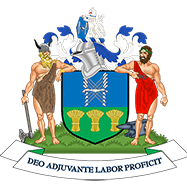
The Full Monty
Sheffield History posted a topic in Sheffield in Films and TV shows (Sheffield Filming Locations)
THE FULL MONTY FILM LOCATIONS opening scene - steelworks? band come round corner @ steelworks Canal Scene Bacon Lane Bridge and Canal Bacon Lane Attercliffe Canal Scene Bacon Lane Bridge and Canal Bacon Lane Attercliffe Steps This is a scene when the lads are walking down to the club towards the start of the film. The steps are located between Horndean Road and Idsworth Road (location of the club). Club Exterior Idsworth Road The Road To The Club Idsworth Road House opposite club Idsworth Road Club Exterior Regency House Idsworth Road Firth Park Road club toilets Shiregreen Working Men's Club 136 Shiregreen Lane Shiregreen club shot Shiregreen Working Men's Club 136 Shiregreen Lane Shiregreen another shot of the club Shiregreen Working Men's Club 136 Shiregreen Lane Shiregreen club toilets again Shiregreen Working Men's Club 136 Shiregreen Lane Shiregreen club shot again Shiregreen Working Men's Club 136 Shiregreen Lane Shiregreen sheffield city centre shot walk up to school Langsett School Burton Street Hillsborough walk up to school Langsett School Burton Street Hillsborough schoolyard Langsett School Burton Street Hillsborough job centre Exterior Shot - West Street Sheffield City Centre job club nice house Jogging Scene Mount Road Parkwood Springs Jogging Scene Mount Road Parkwood Springs Jogging Scene Mount Road Parkwood Springs tinsley towers shot sat on bank overlooking sheffield dancing in front of car headlights ! Woodcock Travel - The Wicker Ye Olde Coach House - The Wicker langsett road - garage (now gone) langsett road garage ballroom dancing scene another shot of sheffield Geralds House 34 Whirlow Park Road Whirlow Geralds House 34 Whirlow Park Road Whirlow walking down the road.. Geralds House 34 Whirlow Park Road Whirlow -
TINSLEY VIADUCT pictured above - the viaduct and meadowhall Source - http://en.wikipedia.org/wiki/Tinsley_viaduct Tinsley Viaduct is a two-tier road bridge in Sheffield, England; the first of its kind in the country. It carries the M1 and the A631 some 1033 metres over the Don Valley, from Tinsley to Wincobank. It is located at 53°25′N 1°24′W. The viaduct was opened in March 1968 and cost £6 million to build. The bridge has since been strengthened, in 1983 and again recently, with work finished in spring 2006. Although originally designed to carry 6 lanes, during the strengthening work the M1 was reduced to 4 lanes following an EU directive on load bearing. This arrangement has now been made permanent to allow the third lane in each direction to join from J34 to make the very busy junction safer. The viaduct is balanced on rollers to allow for thermal expansion and contraction, and the route weaves slightly in order to make its way past other buildings. As things currently stand, the Meadowhall Shopping Centre lies in the valley to the west, while to the east is the Blackburn Meadows sewage works. The viaduct is one of Sheffield's most prominent landmarks, made all the more so by the adjacent pair of cooling towers that were left standing for safety reasons after the demolition of the Blackburn Meadows power station. Both the viaduct and the cooling towers continue to be the subject of local controversy — many criticise the viaduct as unsafe and constantly under repair, and others consider the cooling towers an eye-sore that should be pulled down. More From Wikipedia - http://en.wikipedia.org/wiki/Tinsley_viaduct
-
TONY CURRIE Anthony William Currie (born 1 January 1950) was an English football player, born in Edgware, London, who went on to play for Sheffield United, Leeds United, Queens Park Rangers and England. Tony Currie was a talented schoolboy footballer who represented Hendon Boys before joining Queens Park Rangers as an amateur, whilst working for a building firm. He joined Chelsea as an apprentice, but was released and moved to Watford to complete his apprenticeship, earning England Youth honours in the process. He turned professional in May 1967 and made his league debut the following season. He was transferred to Sheffield United on 1st February 1968 for £26,500. He scored for The Blades on his debut against Tottenham with a header on the 26th but missed the next game on March 2nd as it was his wedding day. 'TC' as he was nicknamed by Sheffield United fans, was idolised in his time at Bramall Lane. He was an effervescent and exuberant attacking midfield player with the vision and ability to strike long dangerous passes. He went on to score 54 goals in 313 appearances and was also made captain by manager Ken Furphy in March 1974. During his time at United, he broke into the England team, winning the first of his 17 caps in 1972 and also playing in the dramatic World Cup qualifier against Poland, which was held at Wembley Stadium in 1973. England dominated the match, but could only draw 1-1. In June 1976 he moved to Yorkshire rivals Leeds United for £250,000, making his Leeds debut in a 2-2 draw with West Bromwich Albion. His skills made him a firm favourite at Leeds and he played arguably the best football of his career during his 124 games and 16 goals at Elland Road; Currie earnt 11 of his 17 England caps whilst at the club. Currie's sparkling form helped Leeds reach the League Cup semi finals in 1978 and 1979, and in the 1978-79 season Leeds finished 5th to qualify for the UEFA cup. However, disputes with manager Jimmy Adamson resulted in his sale to Queens Park Rangers in August 1979. He captained Rangers to the 1982 FA Cup final, but his career was badly affected by injuries and, after 5 goals in 81 games, he dropped out of league football and into semi-retirement from the game. He moved to Canada and spent 2 months playing for the Toronto Nationals, joining Chesham United on his return to England. He subsequently joined Southend United on non-contract terms before being persuaded by David Webb to join Torquay United in February 1984, Currie scoring once in 16 games for the Gulls. He moved to Tranmere Rovers in October 1984, but left without appearing in their first team, leaving him with 81 goals in 528 league games. He moved into non-league football, playing for Dunstable Town, Hendon and Goole Town before being appointed Football in the Community co-ordinator at Sheffield United in February 1988, a post he still holds today. His nephew, Darren Currie, also a midfielder, currently plays for Ipswich Town having previously played for numerous clubs including Brighton & Hove Albion, Wycombe Wanderers, Barnet and Plymouth Argyle.
-
OLIVE GROVE Olive Grove was Sheffield Wednesday F.C.'s first permanent football ground, home to the club for just over a decade at the end of the 19th Century. It was located near Queens Road in the centre of Sheffield. The Need for a Stadium Prior to the opening of the ground, Wednesday had used several other sites including Sheaf House and Bramall Lane, before newly-formed rivals Sheffield United took up permanent residence there. It was decided that the club should have its own stadium to avoid paying a percentage of gate receipts to the owners of the grounds used. Having their own stadium would also make it easier for Wednesday to accommodate their ever growing fan base. Construction Olive Grove was situated near Bramall Lane; just south of the city centre next to the railway tracks on Queens Road, on land leased from the Duke of Norfolk. However, it was in no fit state to host football matches and over £5,000 had to be spent developing the site. Even then, the ground still lacked basic facilities; early on the players even had to get changed at a local pub before matches! The Beginning The first match to be played at the completed stadium was against Blackburn Rovers on 12 September 1887, resulting in a 4-4 draw, with Wednesday coming back from 4-1 behind. Whilst at Olive Grove, Wednesday entered league football for the first time in 1889 by playing in the new Football Alliance. They won 15 out of their 22 matches to clinch the title in the first season, before finally being granted admission to the Football League in 1892. The first game at Olive Grove at his level was Wednesday's 5-2 win over Accrington Stanley. However, the club experienced a poor season and narrowly avoided relegation from the First Division. The End Despite steady improvement on the pitch over the following years, the days would soon be numbered for Olive Grove. Plans were made to expand the railway track beside the ground, and as a result, Wednesday's lease would not be renewed. To make matters worse, the final season at Olive Grove was a disaster; the team lost more than half of their 34 matches and were relegated from the top tier of English football for the first time. Things looked very bad for the club. A New Beginning In the spring of 1899 shares in Wednesday were issued to raise capital for a brand new stadium. Two sites were proposed for the development - Carbrook, in the North East of the city, and Owlerton, then a rural area to the North West. Despite the fans favouring the Carbrook site, the club committee chose the latter, and work soon began on Owlerton Stadium, later to be renamed Hillsborough, now one of the most famous football stadia in the country. Records Due to poor record keeping, it is difficult to give an accurate figure for the record attendance at Olive Grove. For many games the attendance was simply listed as "Good" or "Poor" and when figures were recorded these were only estimates. However, an attendance of 20,000 was recorded at the FA Cup 3rd round match against West Brom on 14 February 1891 and this was probably a record for the stadium.

